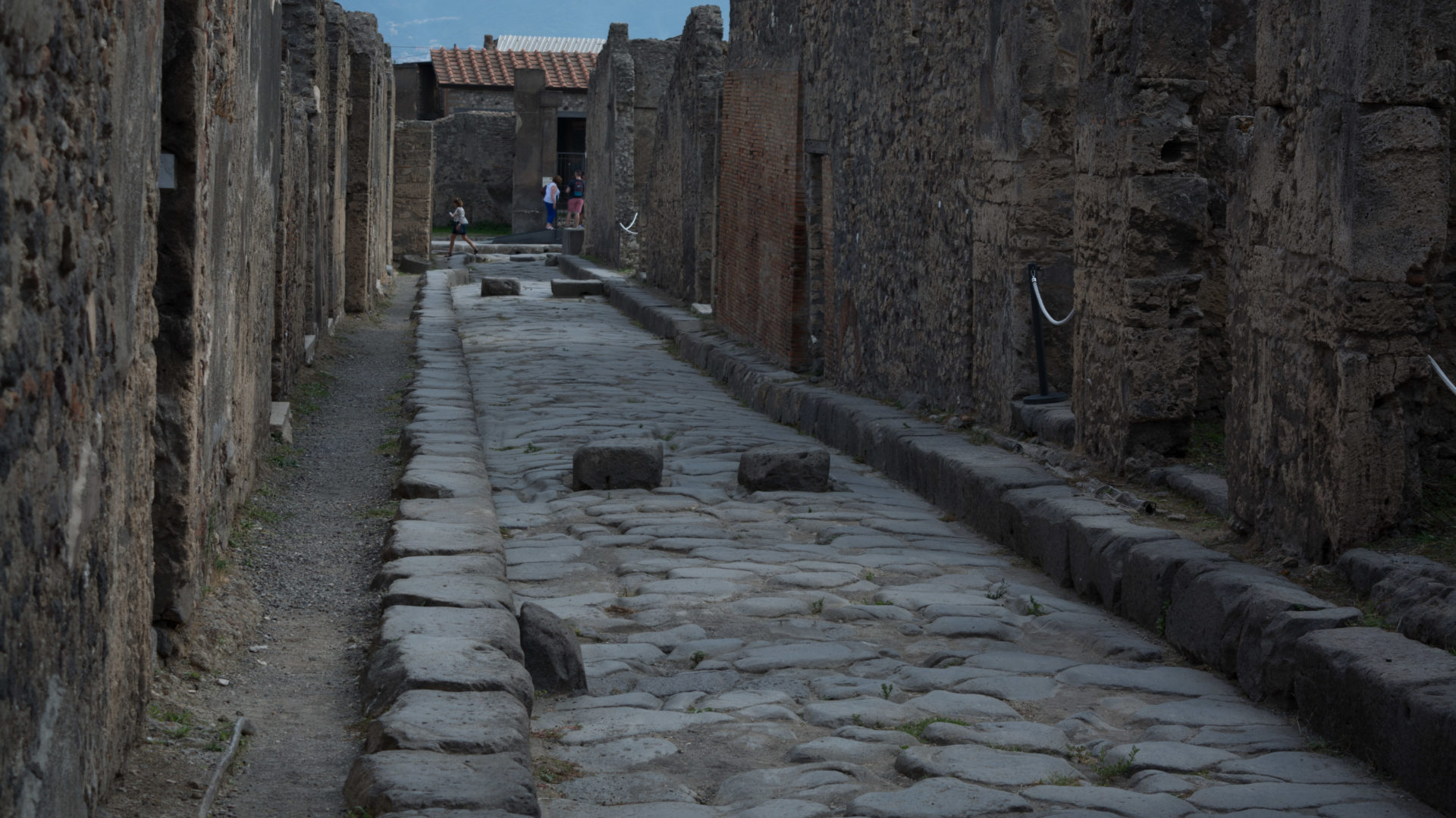Day 4 started early with breakfast in the hotel dining room. Today we would be driving Eastward across the island to Syracuse (known to the Greeks as Siracusa). Along the way we would stop and visit the ruins of Piazza Armerina, a large and very well-preserved Roman home. Built in approximately 300 AD by a person who was clearly quite wealthy, the villa is known for its elaborate mosaics floors which depict mostly wildlife and hunting scenes. There are many theories about who the owner was, but given the prevalence of hunting and trapping themes throughout the home, the theory that made the most sense to me was that the owner was a rich entrepreneur who owned a business catching exotic animals and selling them for use in amphitheaters, as well as taking rich clients on hunts to faraway locations. The villa’s location, situated on an island between Rome and North Africa, seemed to fit well in to this concept. The artwork in the mosaics also owes much to the influence of North African art that existed at the time. There is, however, another theory that the villa belonged to the Emperor Maximian, one of the last Pagan Emperors of Rome.
On our way to the villa, Denise explained that houses like these were built at a time when the Roman wealthy were becoming less and less interested in living in the cities, and so they built these large and magnificent homes out in the countryside so that they could live peacefully on their estates. Sometime after the villa was built a town called Platia arose nearby, and over the ensuring centuries the house would see a variety of inhabitants as well as several renovations. The villa was finally destroyed in 1160 during the reign of William I (also known as William the Bad) and was covered by a massive mudslide later in that century.
We were lucky enough to reach the villa on a day when it was not very crowded. Pope Francis was in town at the time of our visit, and we were warned that we would have to leave the villa if the Pope decided he wanted to visit the ruins. But as luck would have it he did not, and with all of the crowds away observing the Pope’s speech, we nearly had the villa to ourselves.
The first room that we approached upon reaching the house was the private bath complex. This network of rooms sits on one corner of the house and has both exterior and interior entrances. After my trip to Pompeii last year, the inner workings of the baths was very familiar. Hollow tiles in the walls allow warm air to circulate around the room, evenly heating the space inside:
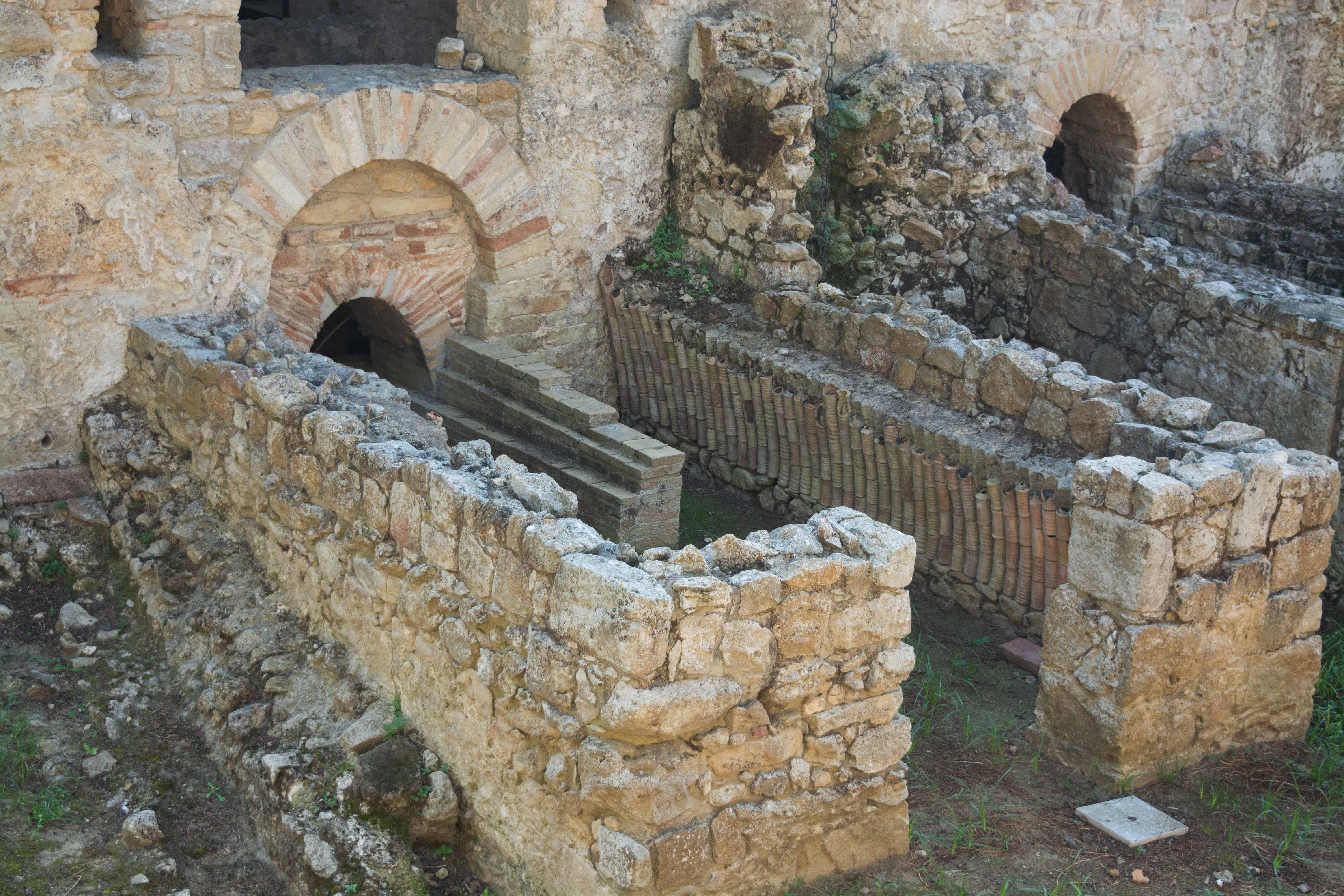
In a long and narrow room nearby, we got our first glimpse of the mosaics for which this villa is famous. The floor of this room depicts a chariot racing scene, with the drivers running in an oval shape around a central spine or “spina.” The chariot in the lower right corner has crashed, toppling its driver:
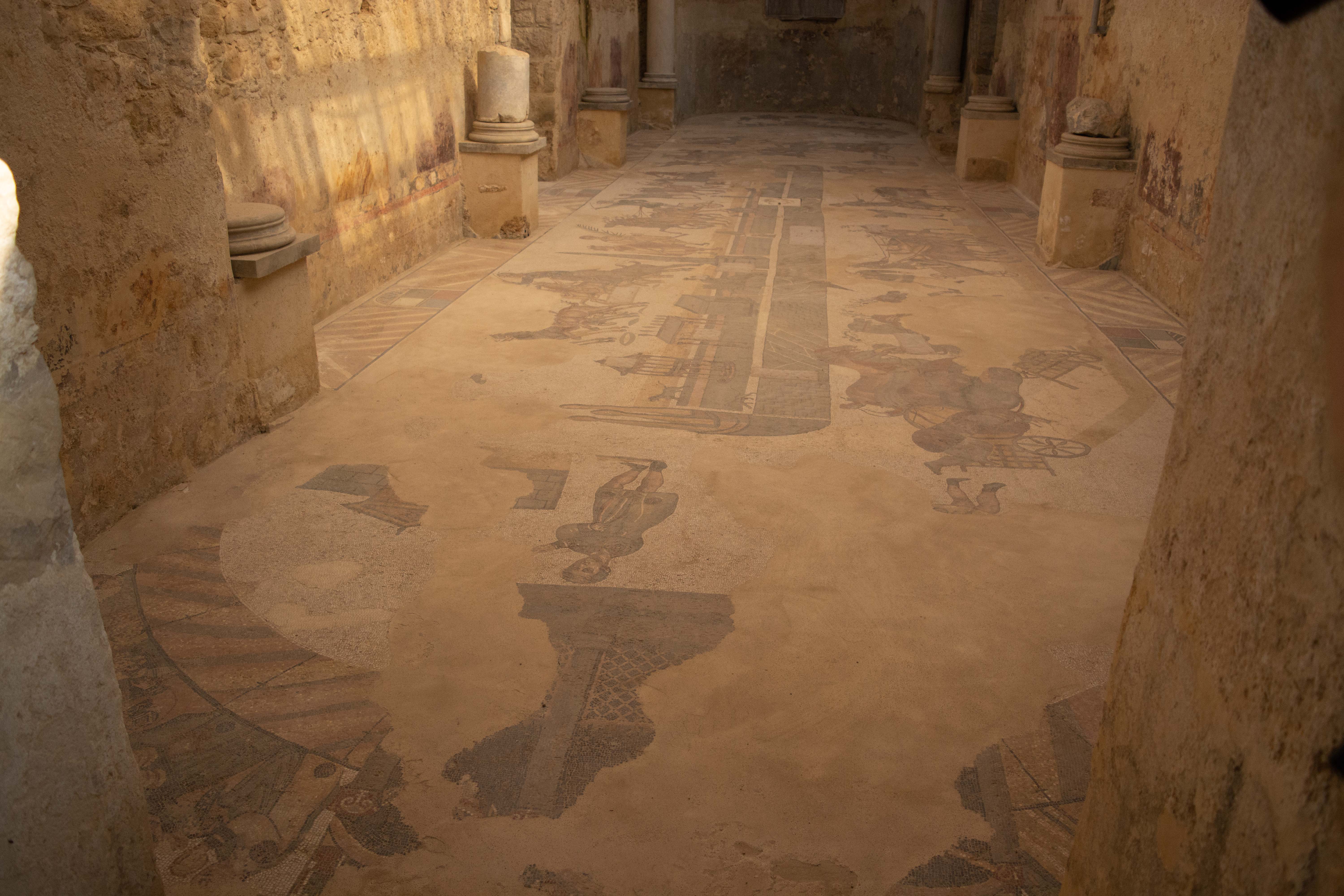
Once inside the house we walked up a wooden staircase to a platform overlooking the central plaza, known as a “peristyle.” This is a rectangular walkway surrounding a pool and fountain in the middle, with columns all around it. The mosaics here were a series of colorful wreaths, each encircling the head of a different animal:
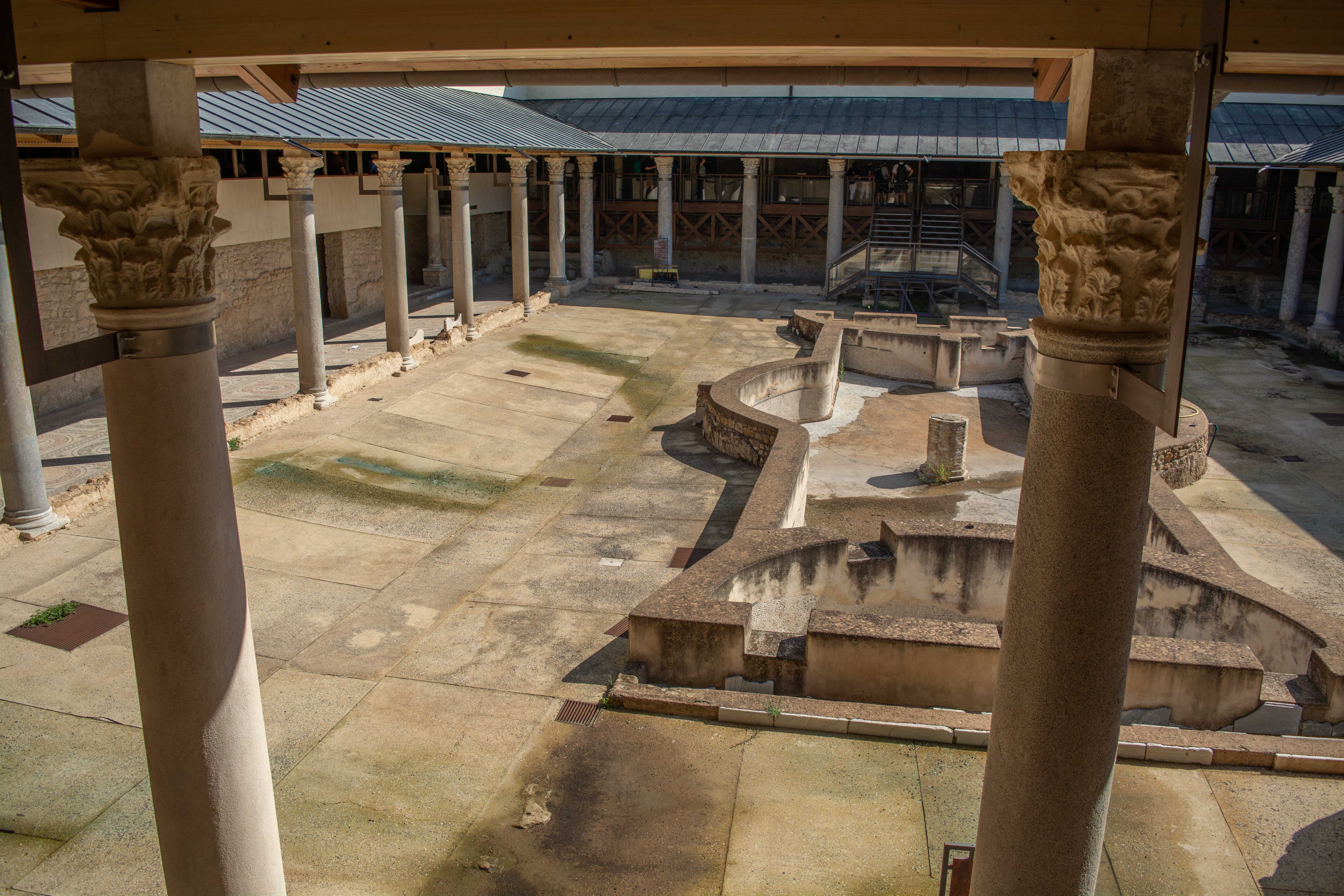
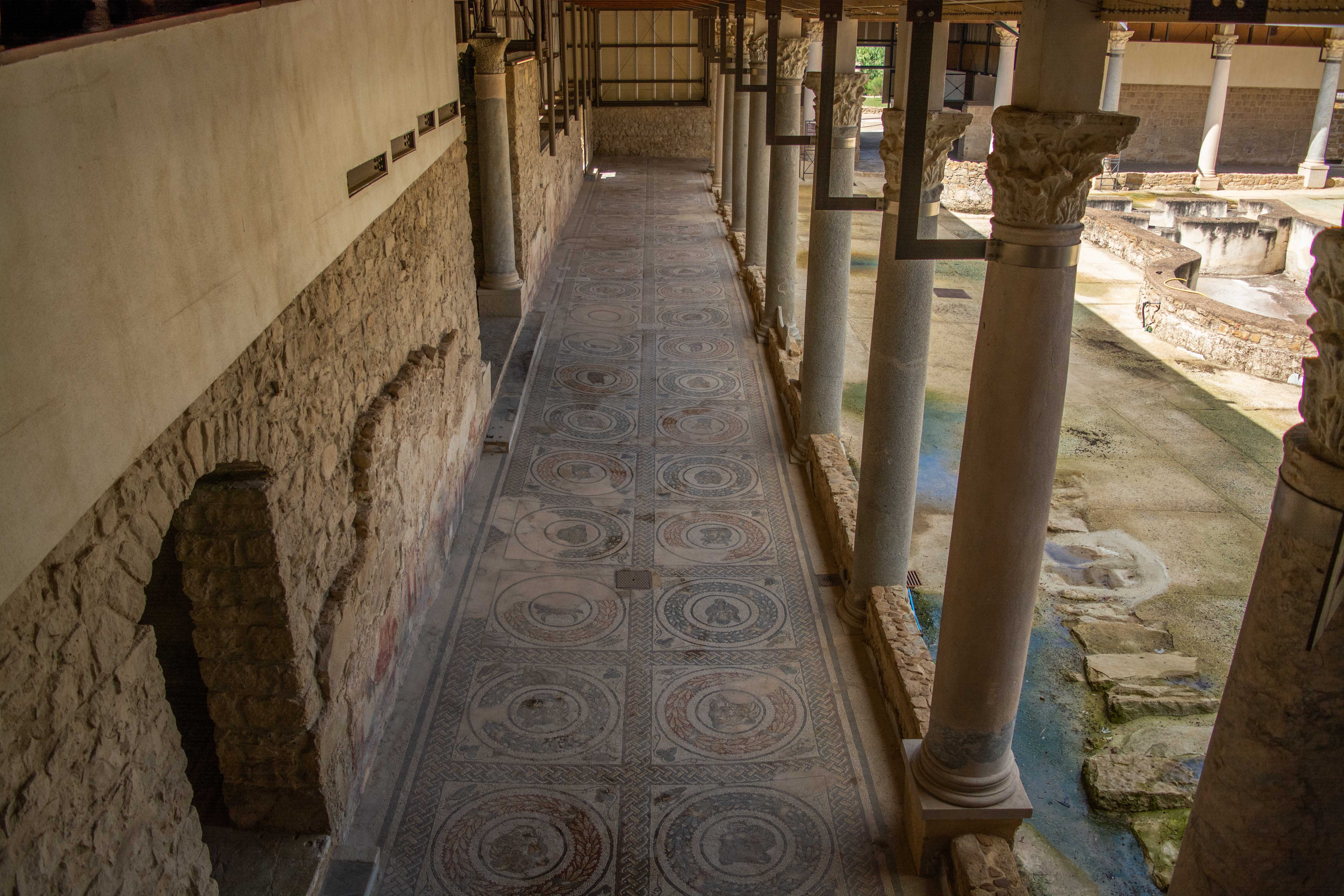
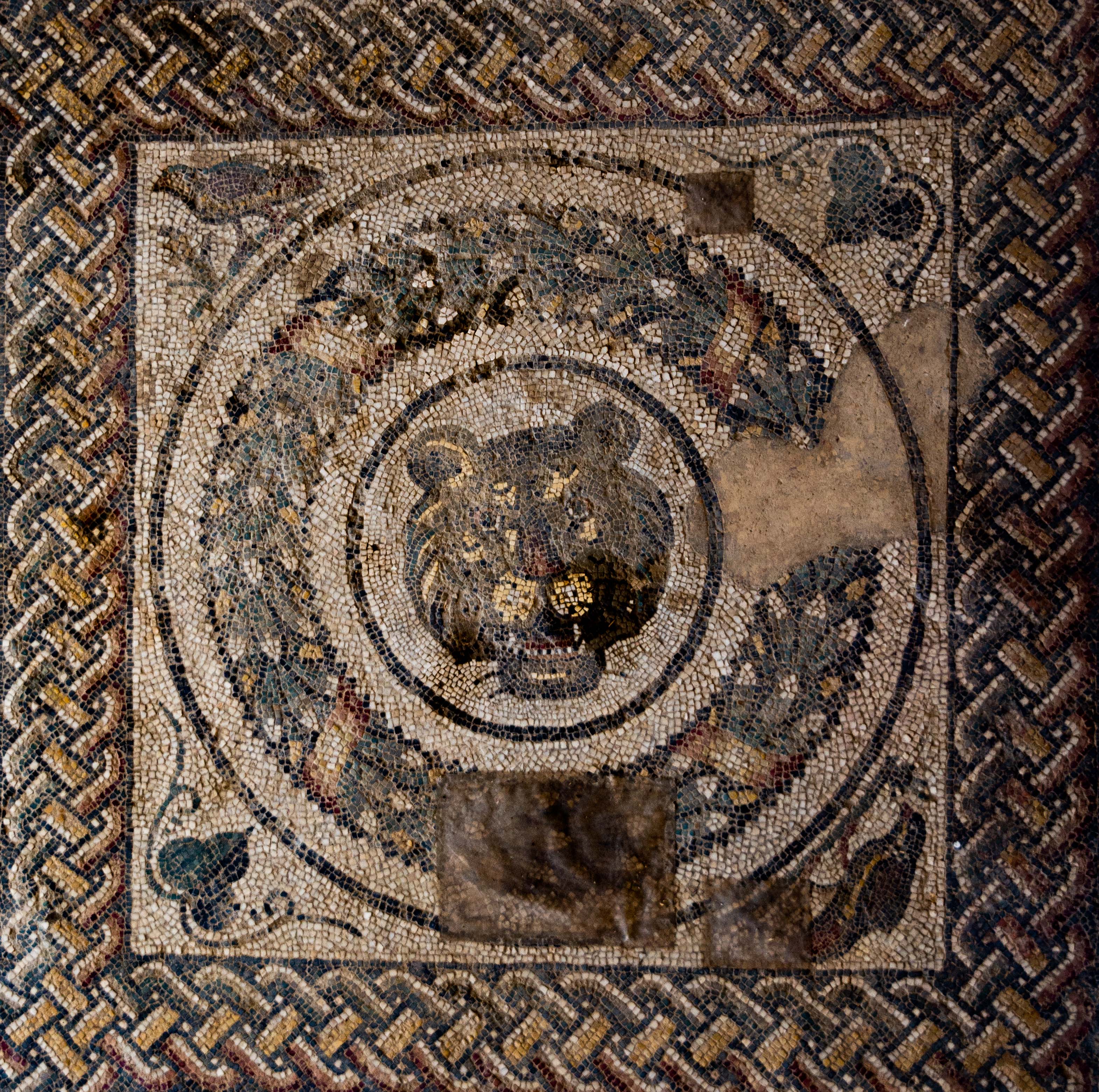
At one corner of the peristyle is a private entrance to the baths, which is only accessible from inside the house. On the floor of this small room is a group portrait of an adult woman and several young girls, though to be the owner’s wife and daughters:
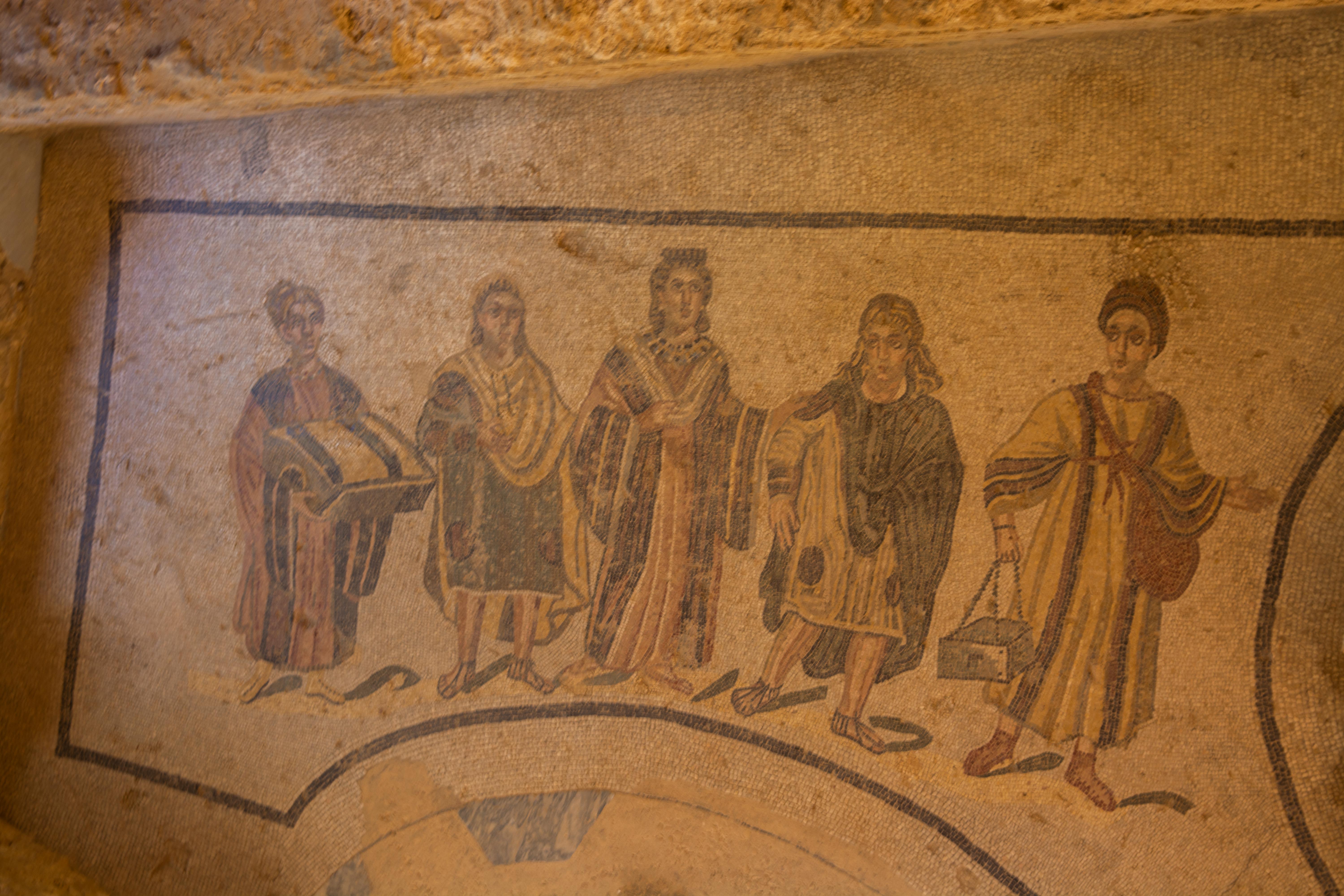
The room next to it is a utility room or a servant’s room. Its floor, though impressive, is not nearly as grand as some of the mosaics seen elsewhere in the house. The floor of this room has a square hole cut into one corner. This is a pottery kiln which was installed in the Norman period, not long before the house was destroyed and buried:
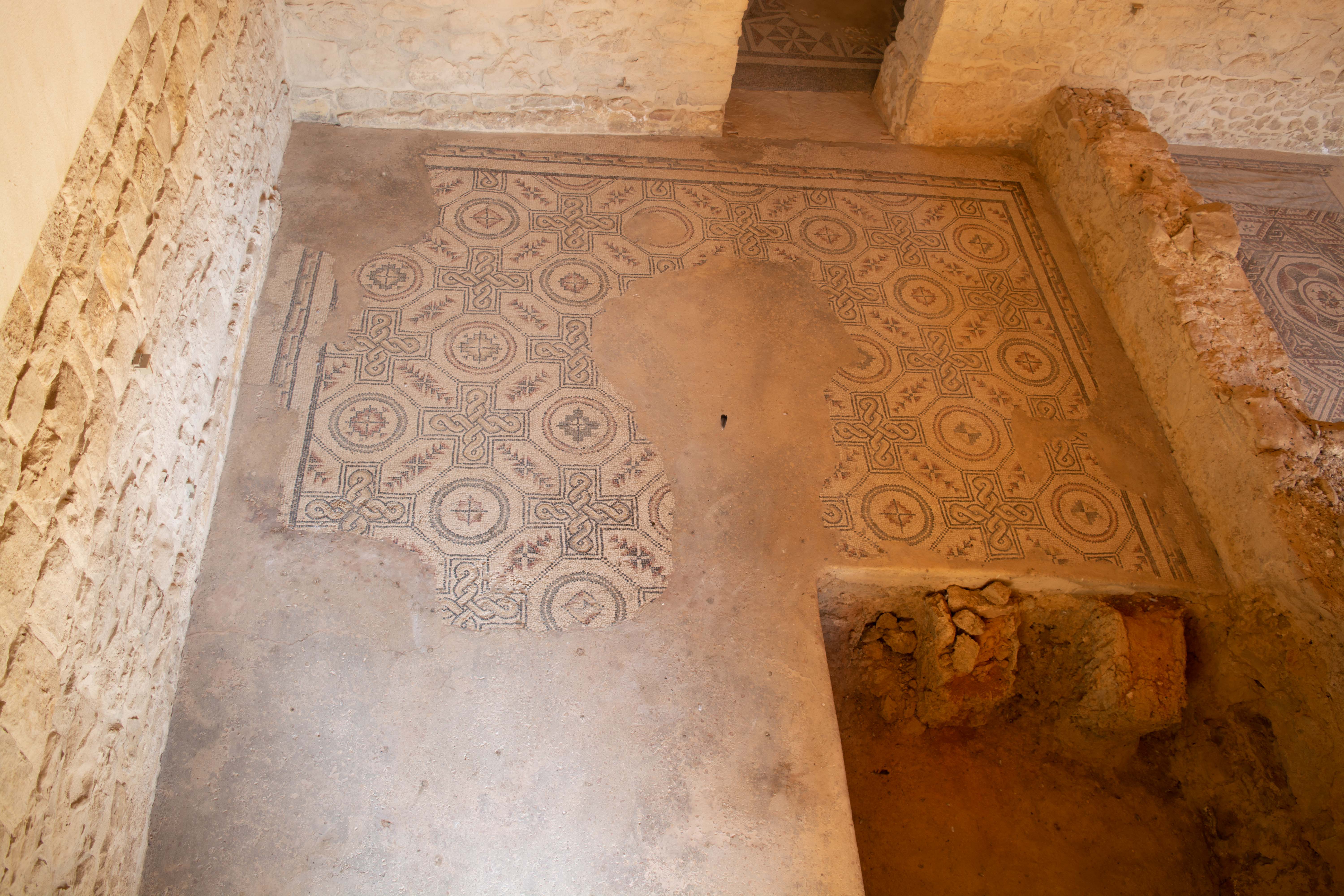
Another utility room near the peristyle has a series of portraits of people interspersed with fish and waterfowl:
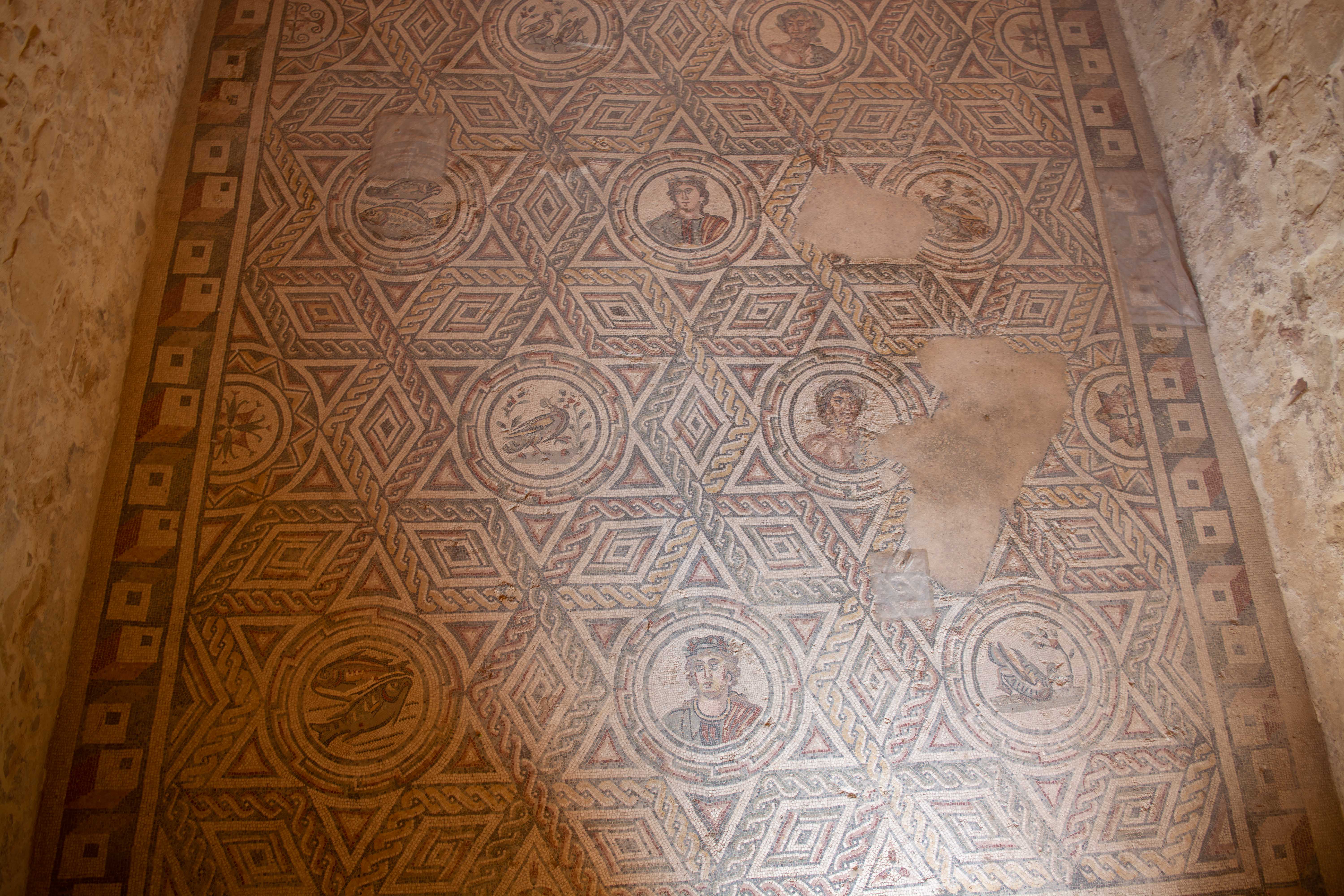
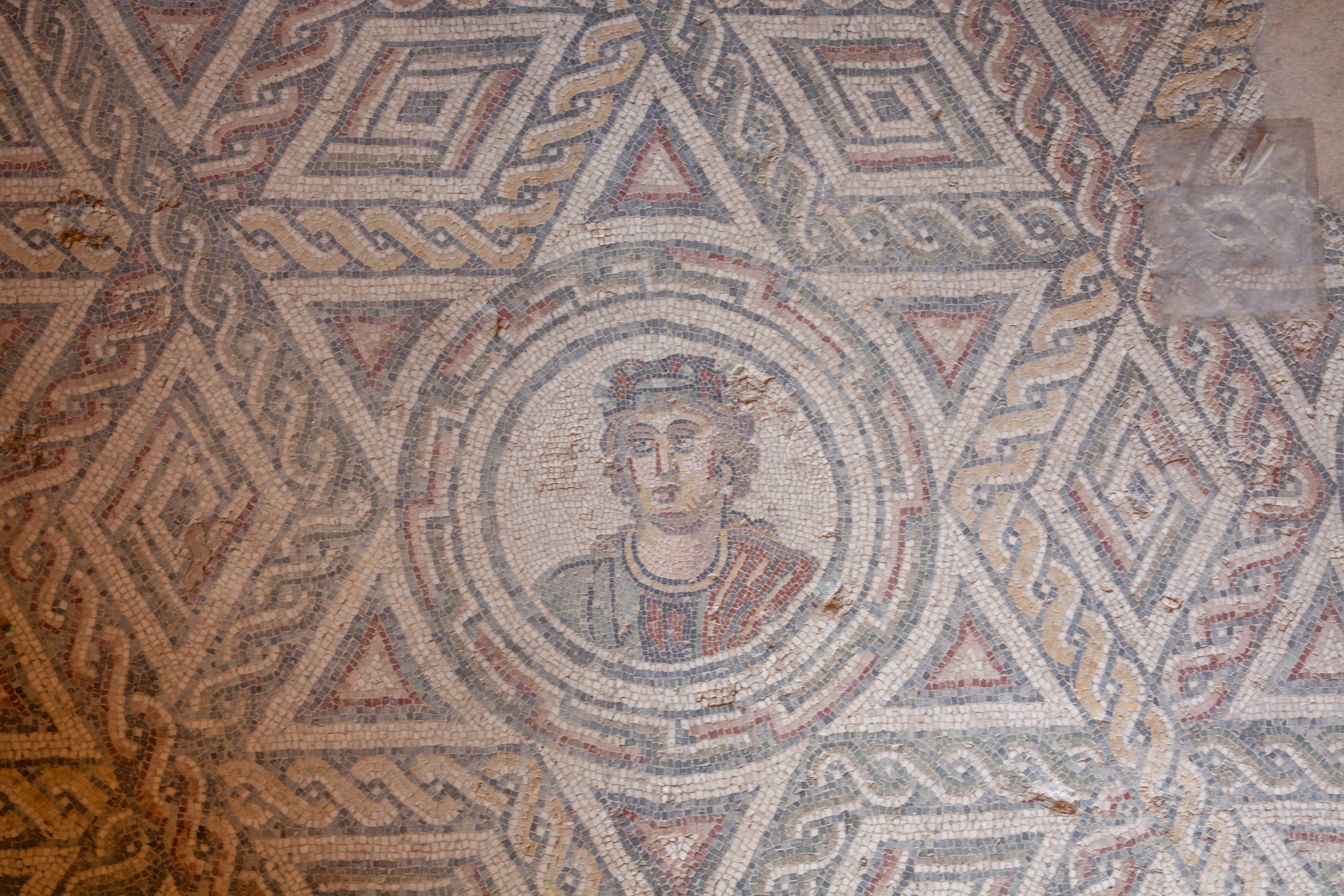
The next room, known as the “Room of the Dance,” is badly damaged but still has some recognizable human figures. It has been suggested that the scene is either a depiction of couples dancing, or is meant to show the Rape of the Sabine Women, an important event in the founding mythology of Rome:
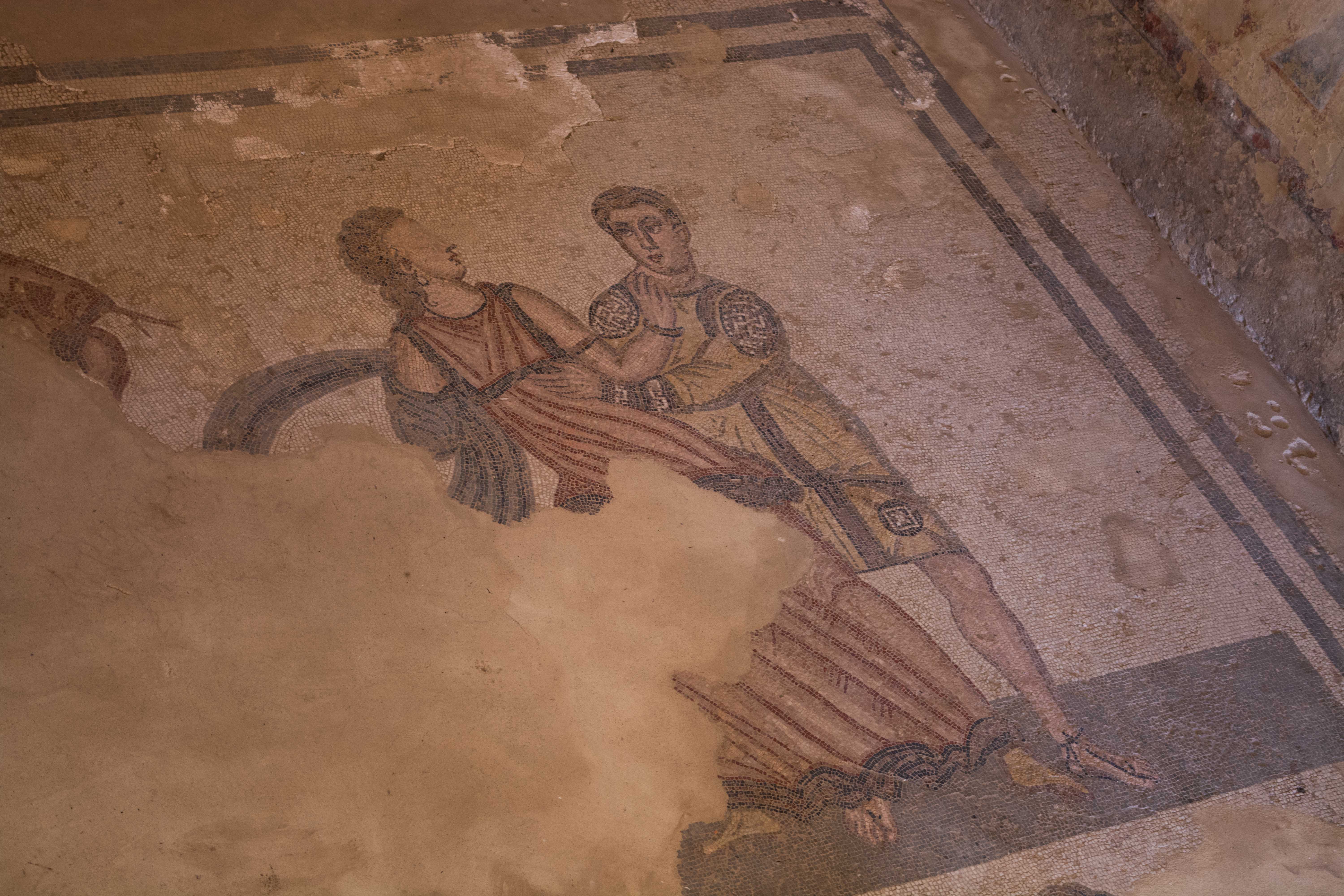
Also near the peristyle is a room known as “The Hall of the Small Hunt.” The mosaics in here show a number of scenes from a hunting trip, and are much more elaborate than the other rooms nearby. In person the color and level of detail is enough to take your breath away:
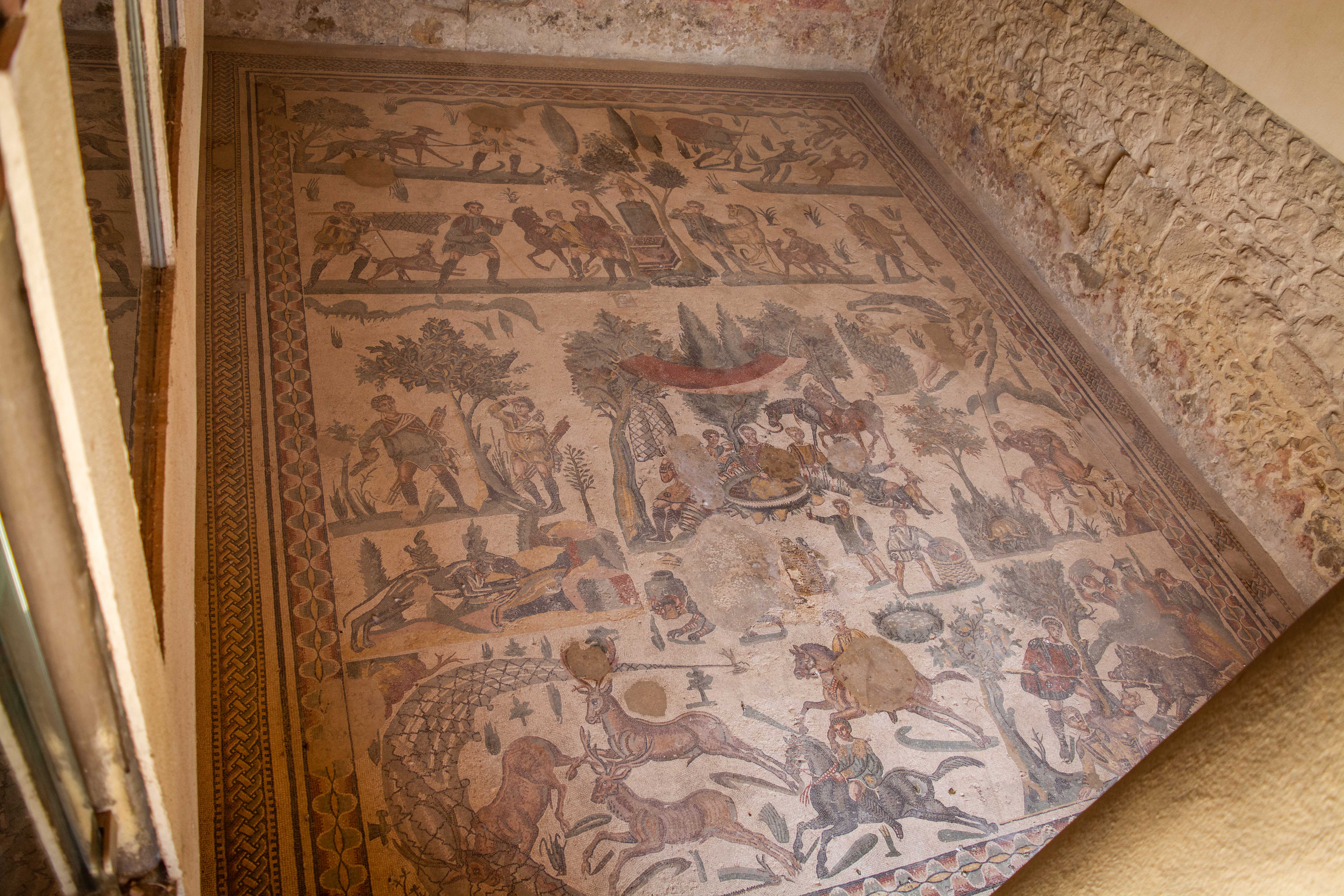
At the center is a group of men seated in a semi-circle:
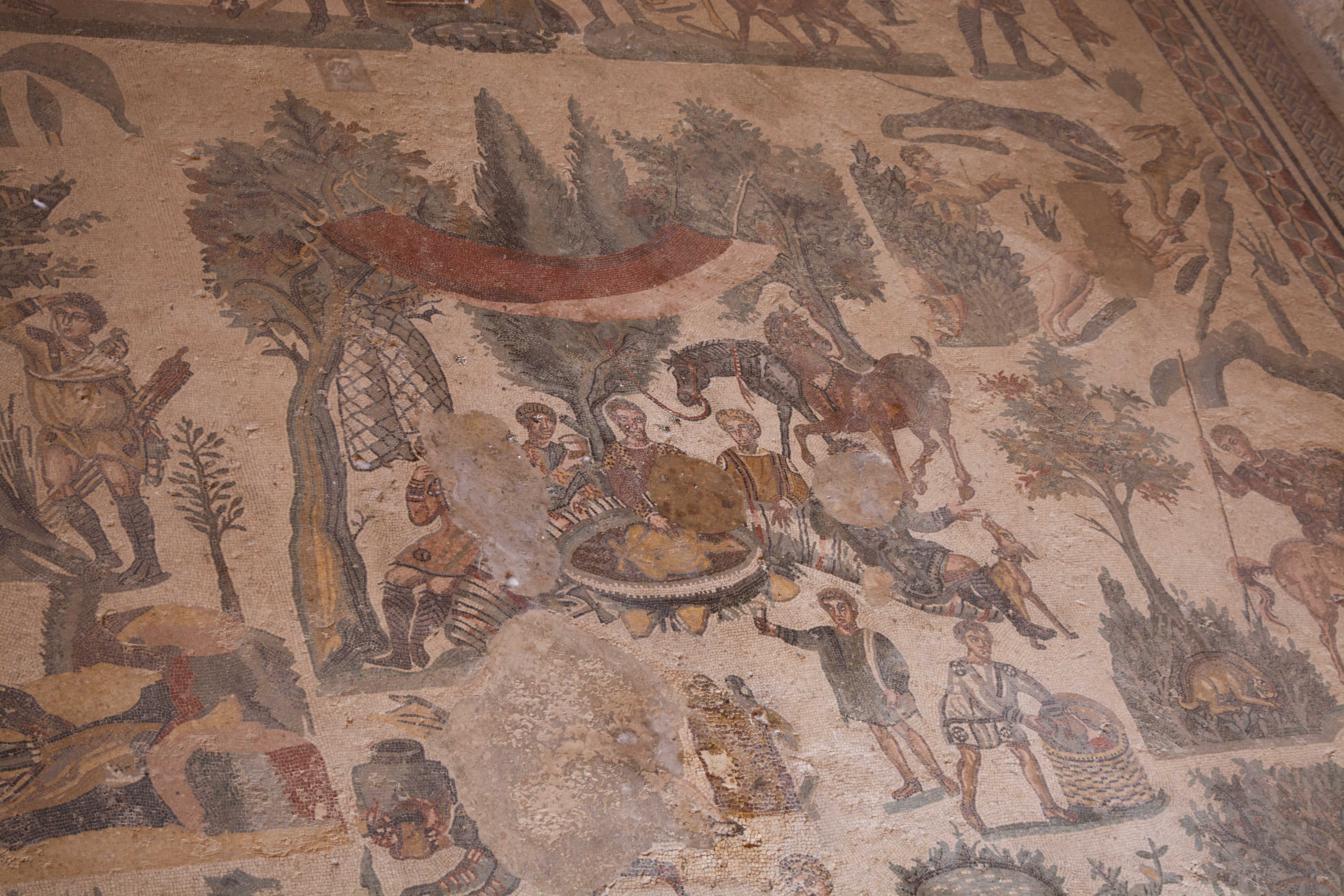
There are also scenes of men riding on horseback:
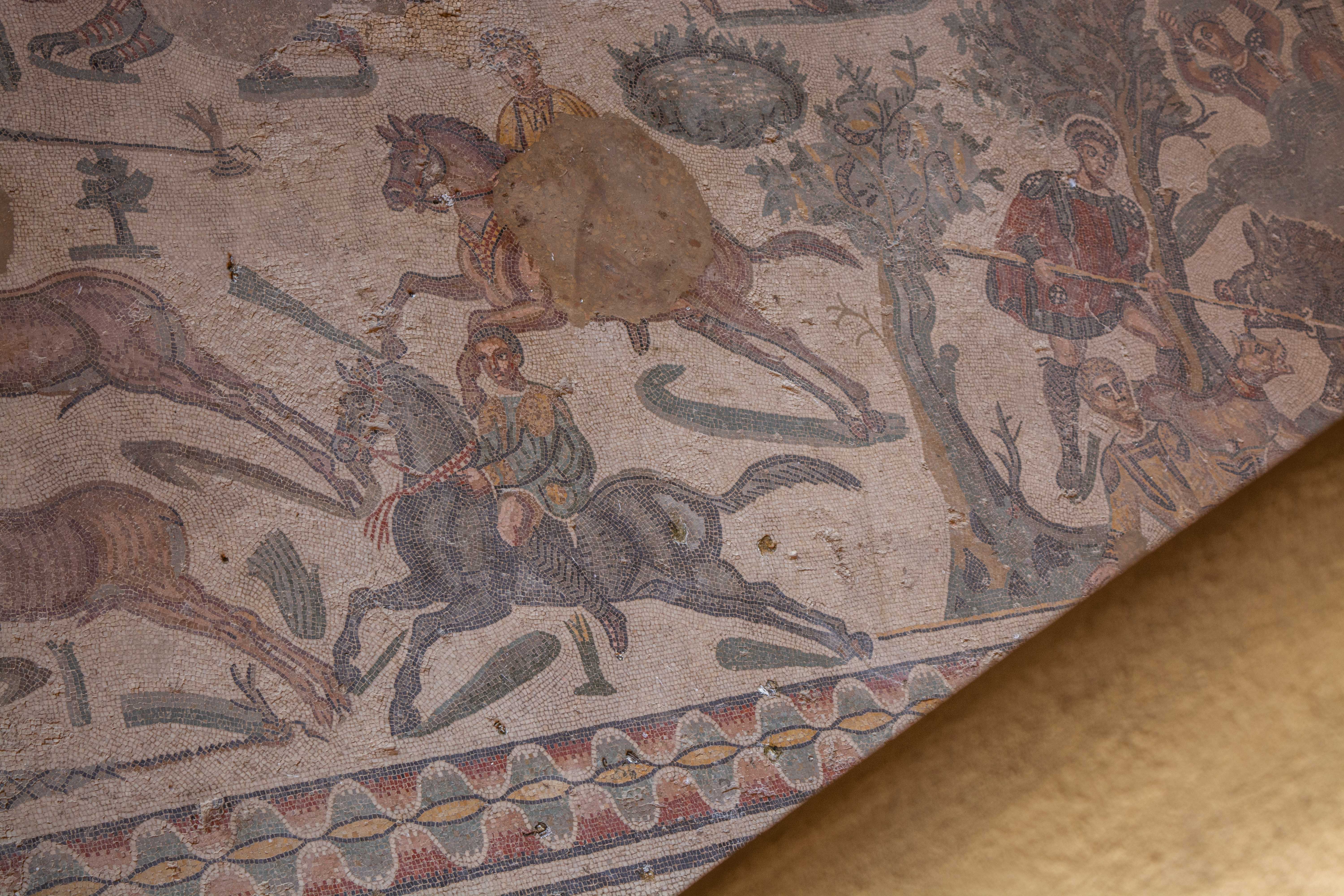
A scene of a boar being killed:
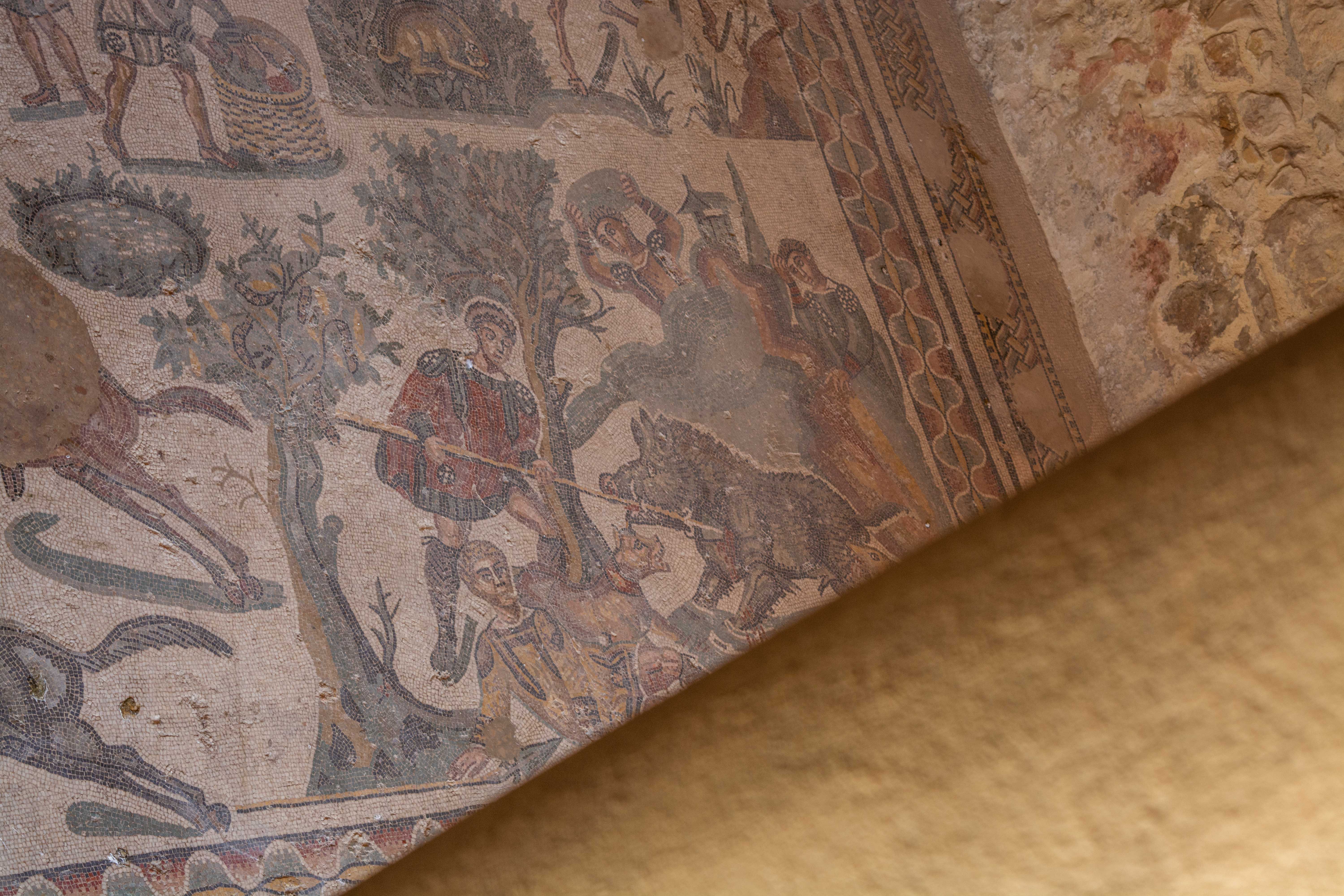
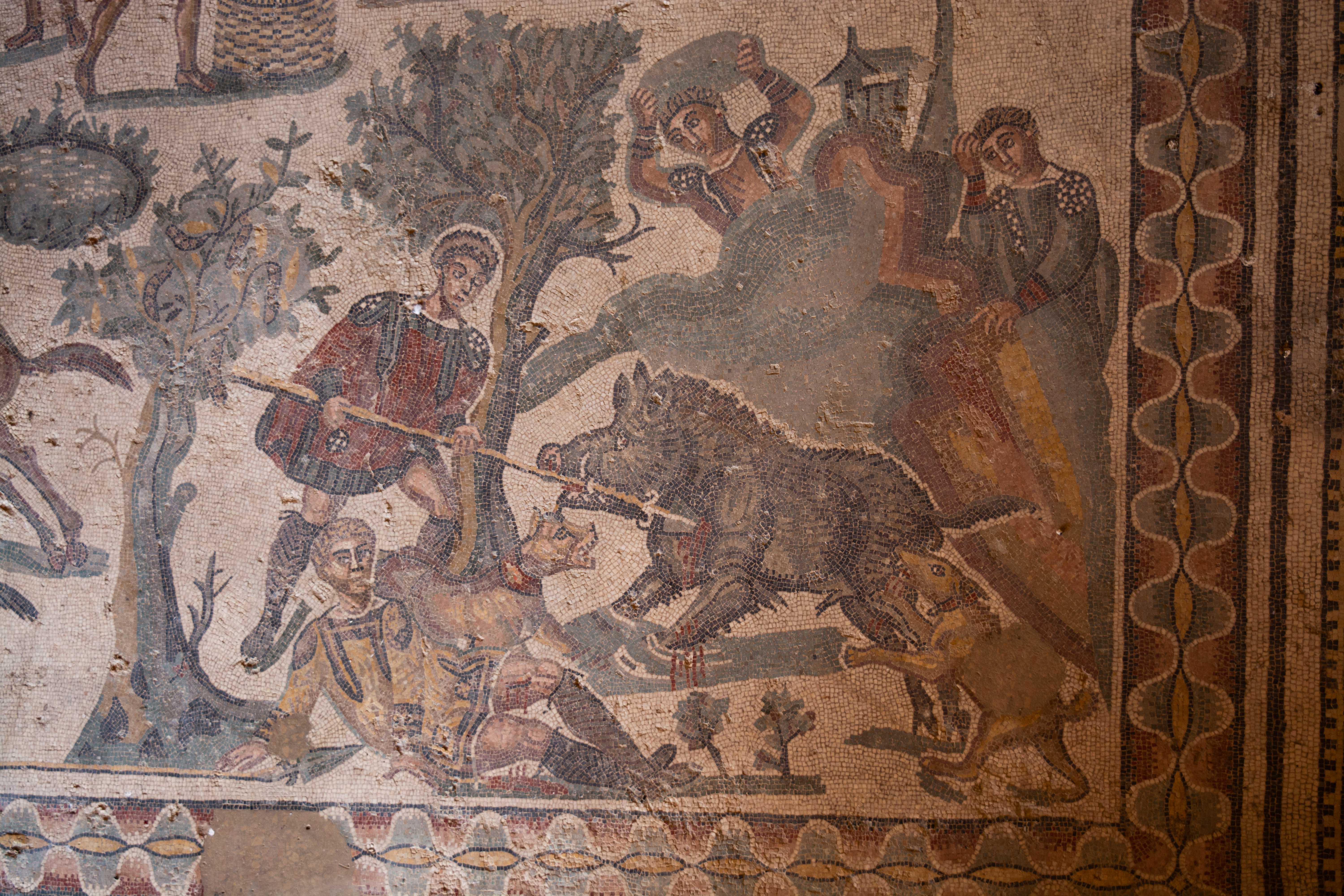
Another boar caught in a net and being carried away by two men:
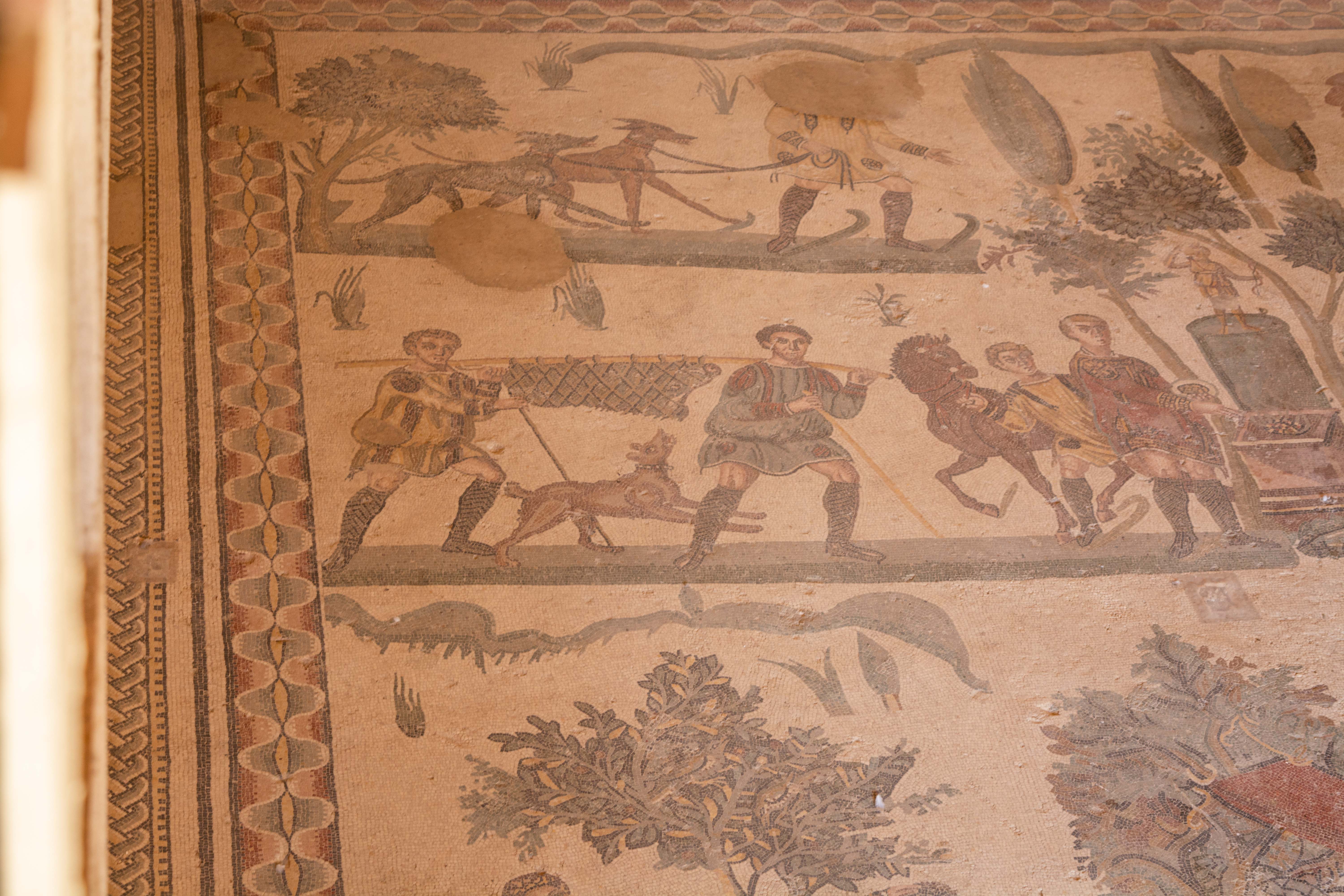
And two other men trying to catch birds hiding in a tree:
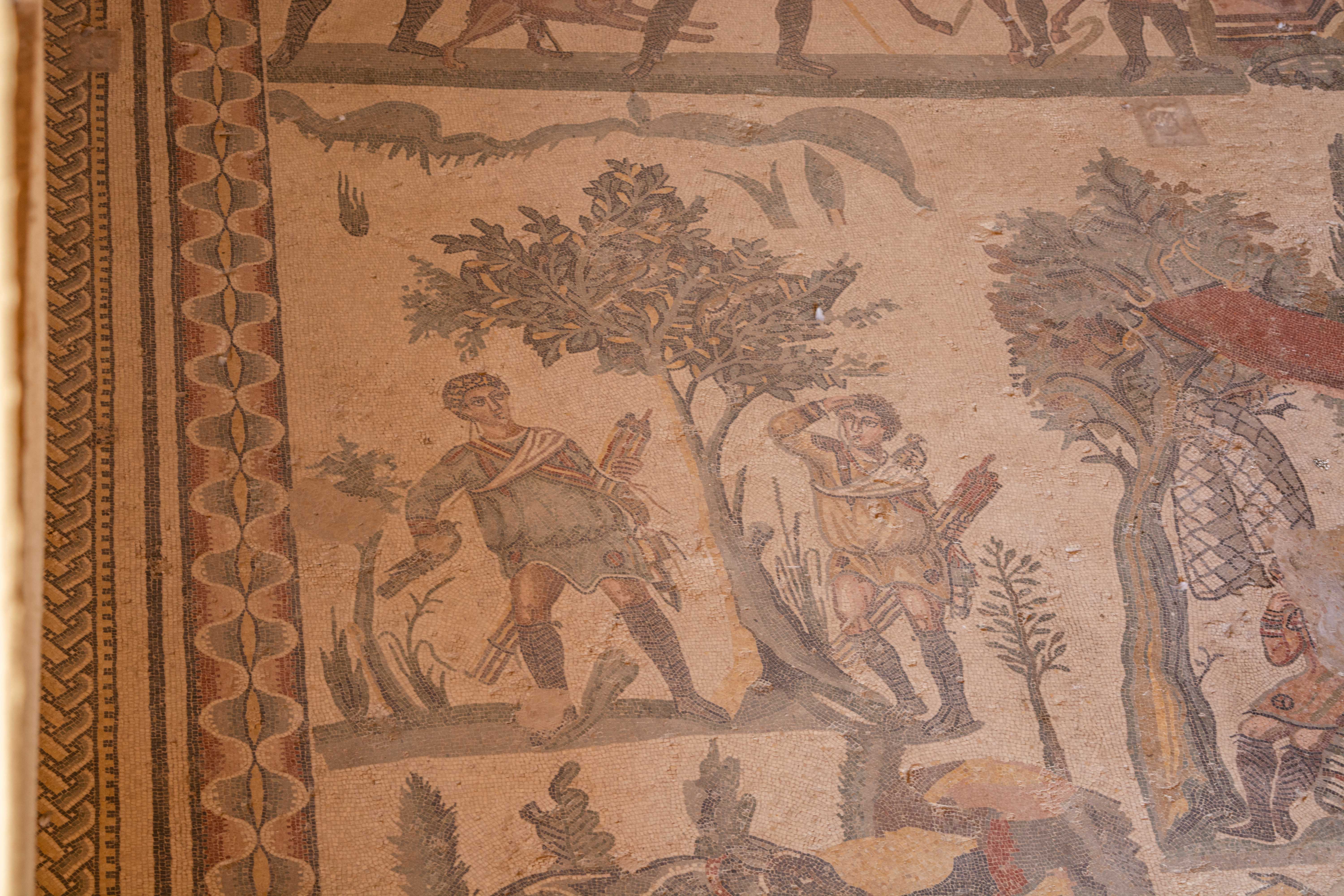
At the top and center, a group of men are standing around what appears to be a grill:
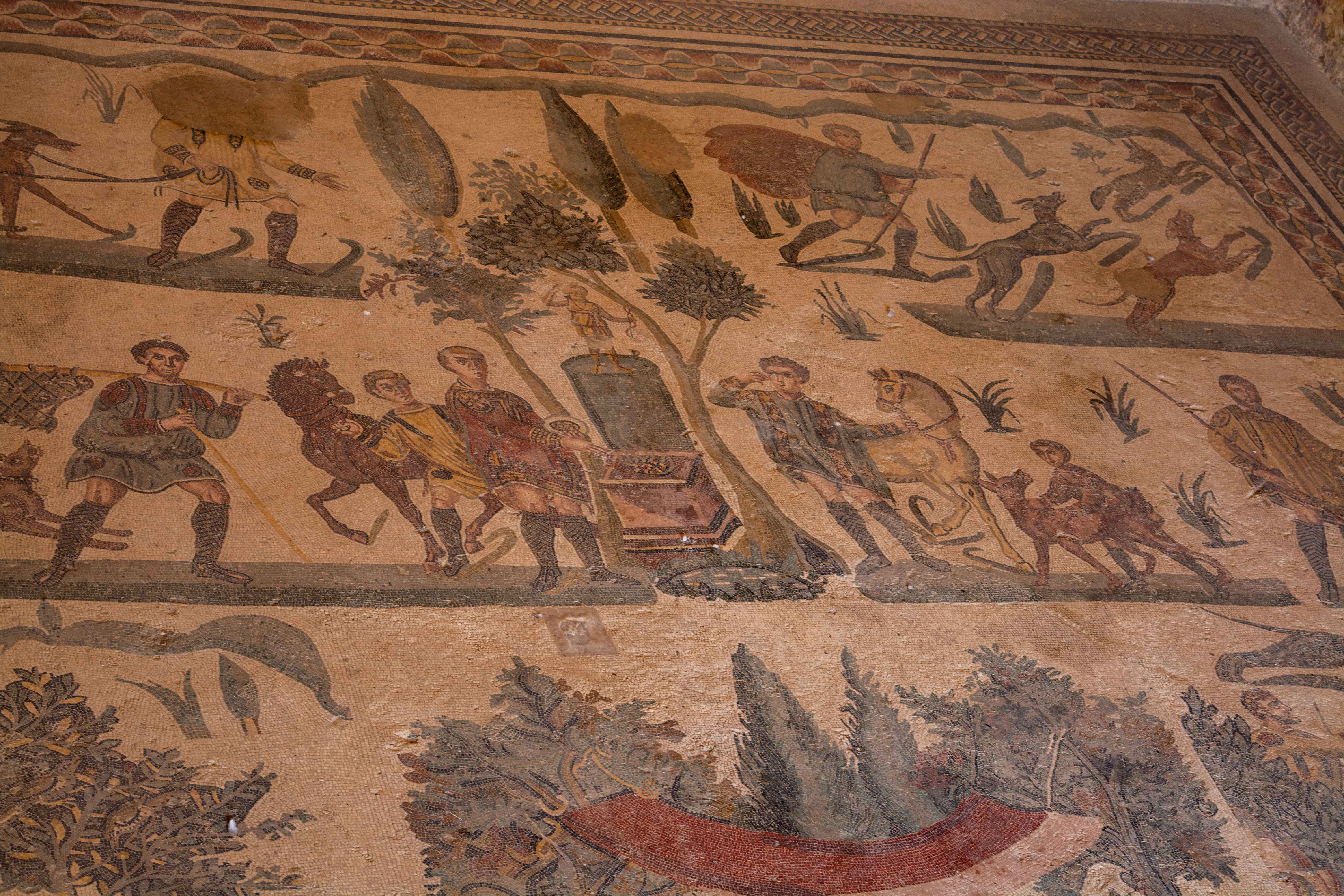
While another man leads two hunting dogs on leashes:
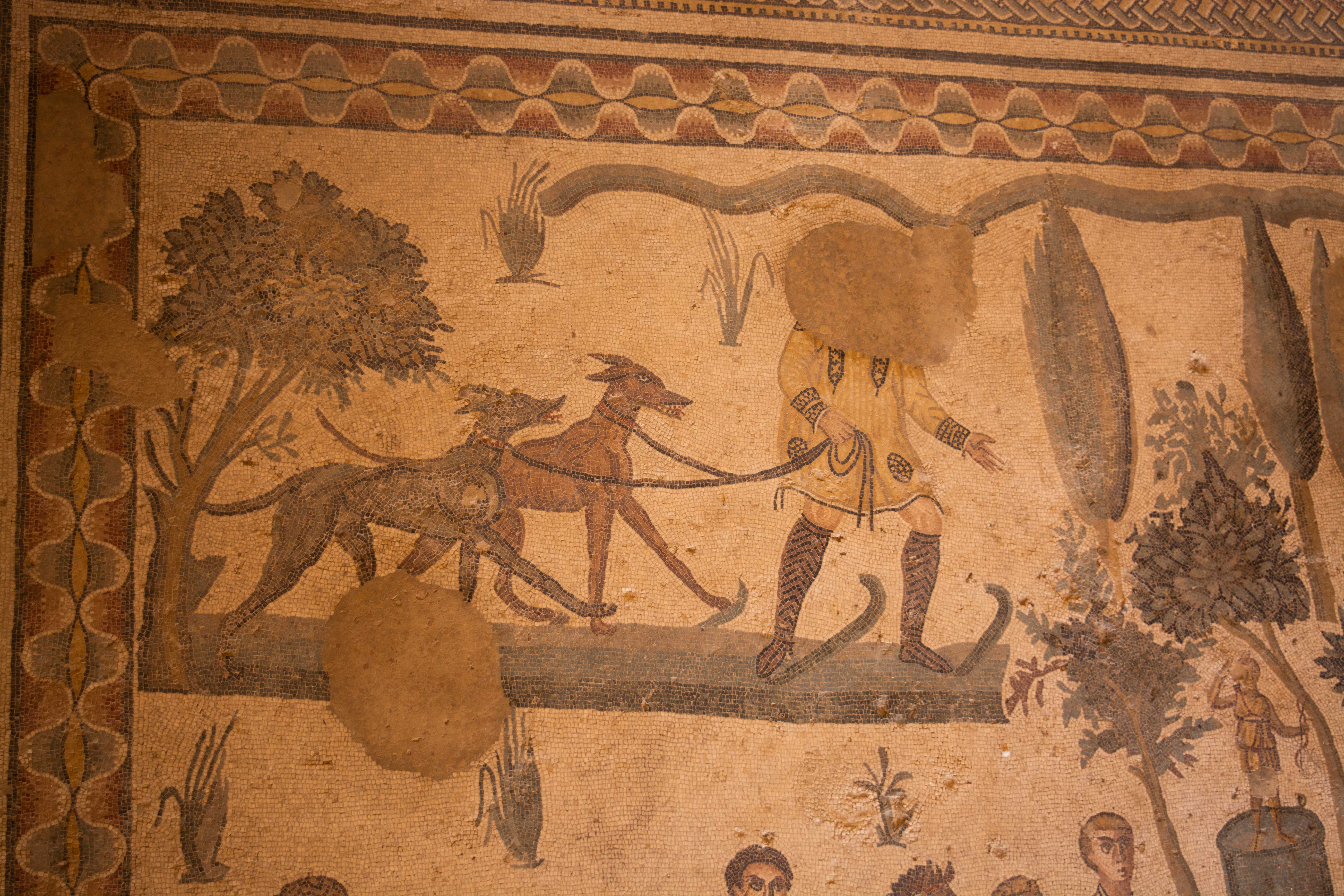
Are these scenes from a hunting trip that the owner of the house went on as a young man? We will never know for sure.
Although not as well-preserved as the Hall of the Small Hunt, this next room has a nevertheless impressive fishing scene on the floor:
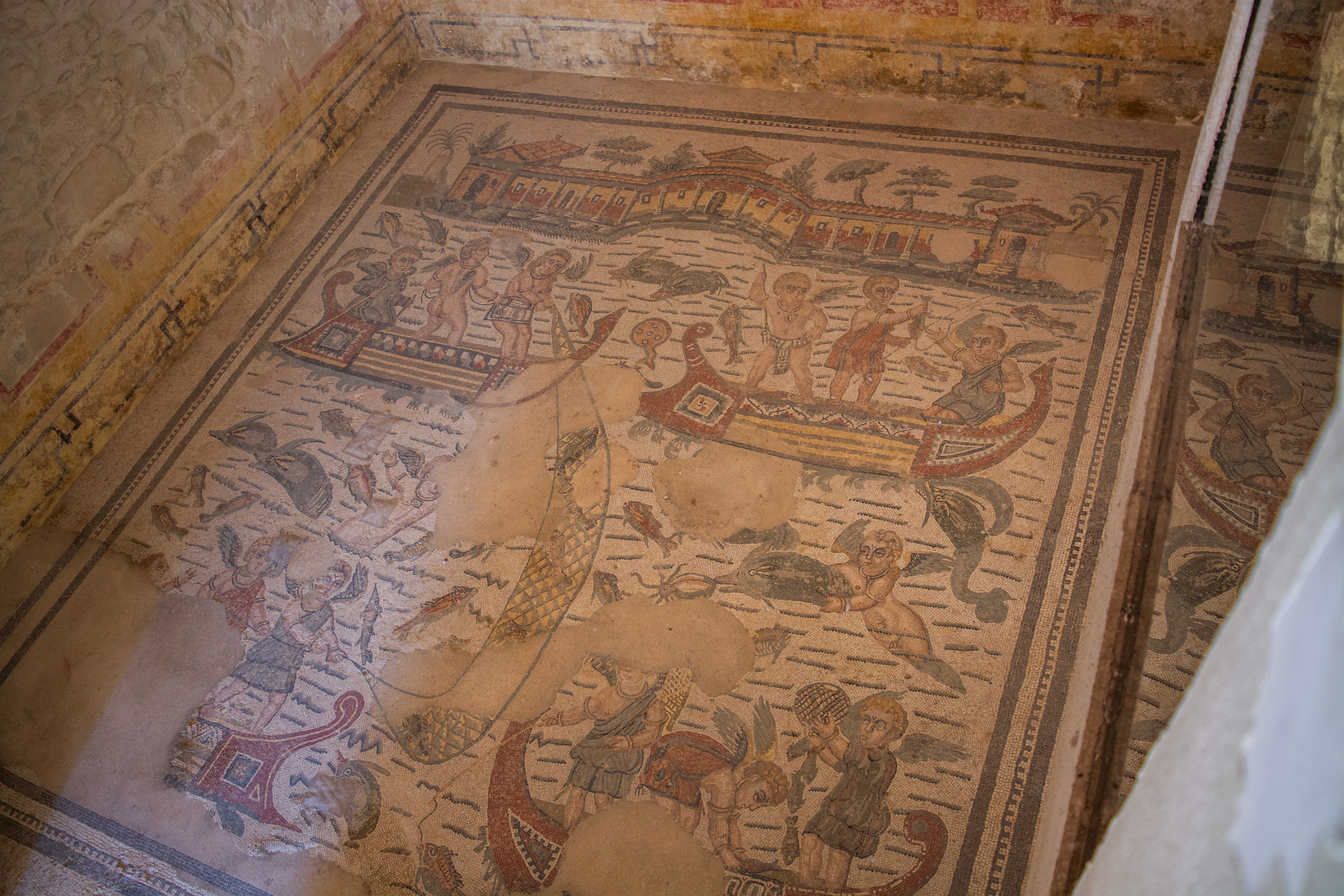
But the most impressive feature of the whole house, by far, was the Hall of the Great Hunt. This is a hallway stretching over 200 feet long down the entire length of the house. Covered from end to end with jaw-dropping mosaics showing a variety of hunting and wildlife scenes, it is truly a wonder to behold. It was not possible to take a photograph of the whole thing, so here I have several individual scenes. As impressive as the pictures may be, it is even more astonishing in person:
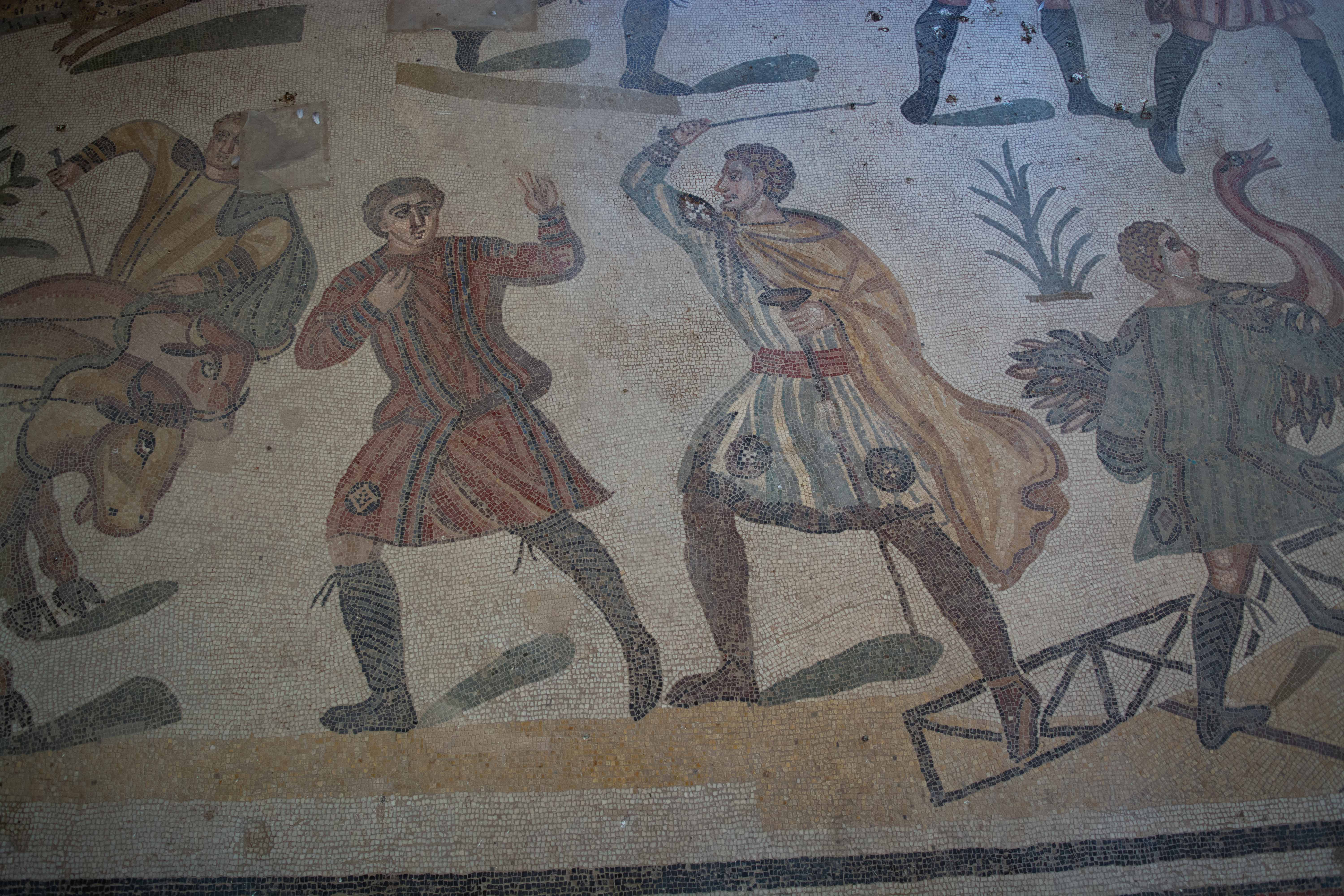
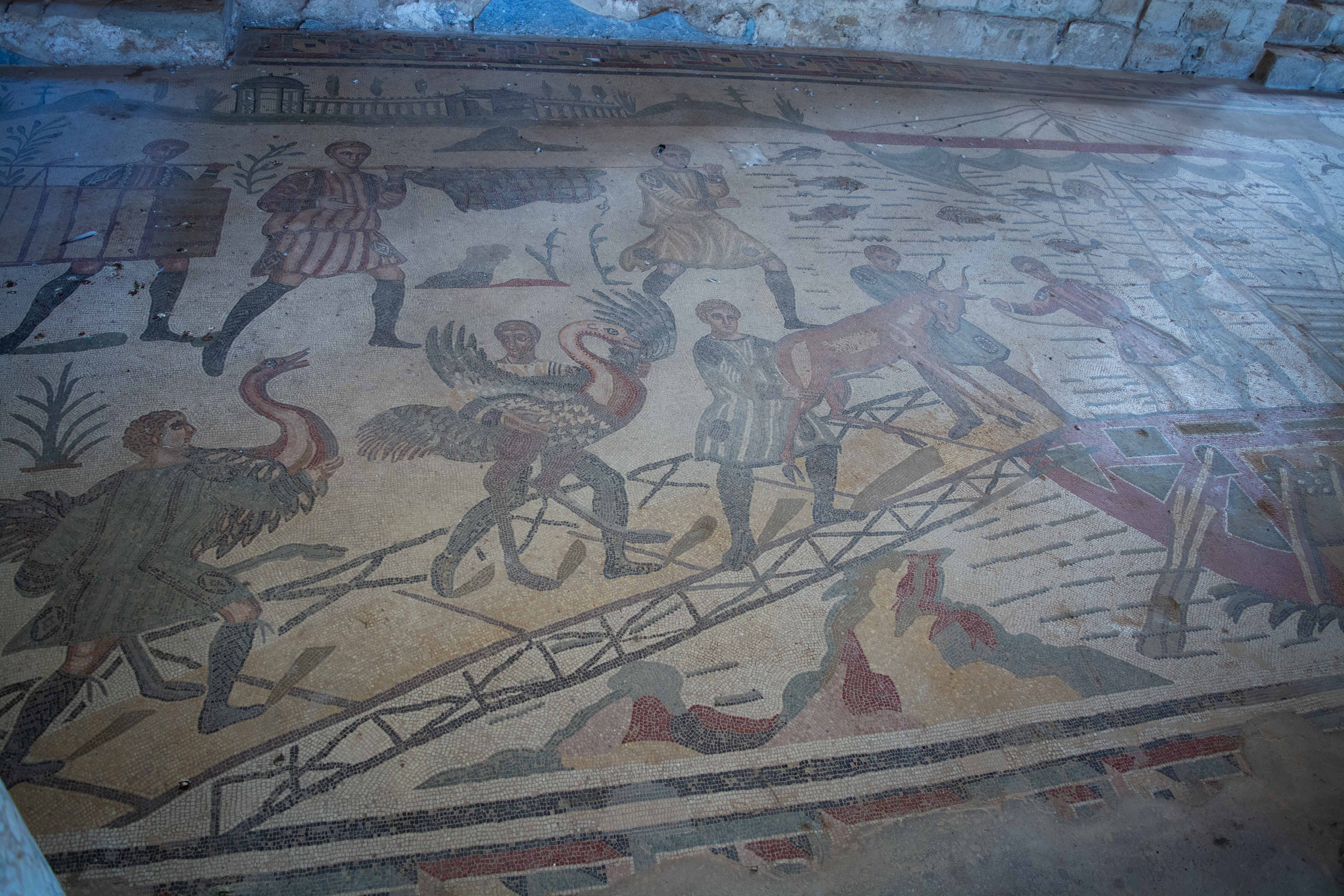
Along the length of the hallway, doorways open to other rooms in the house:
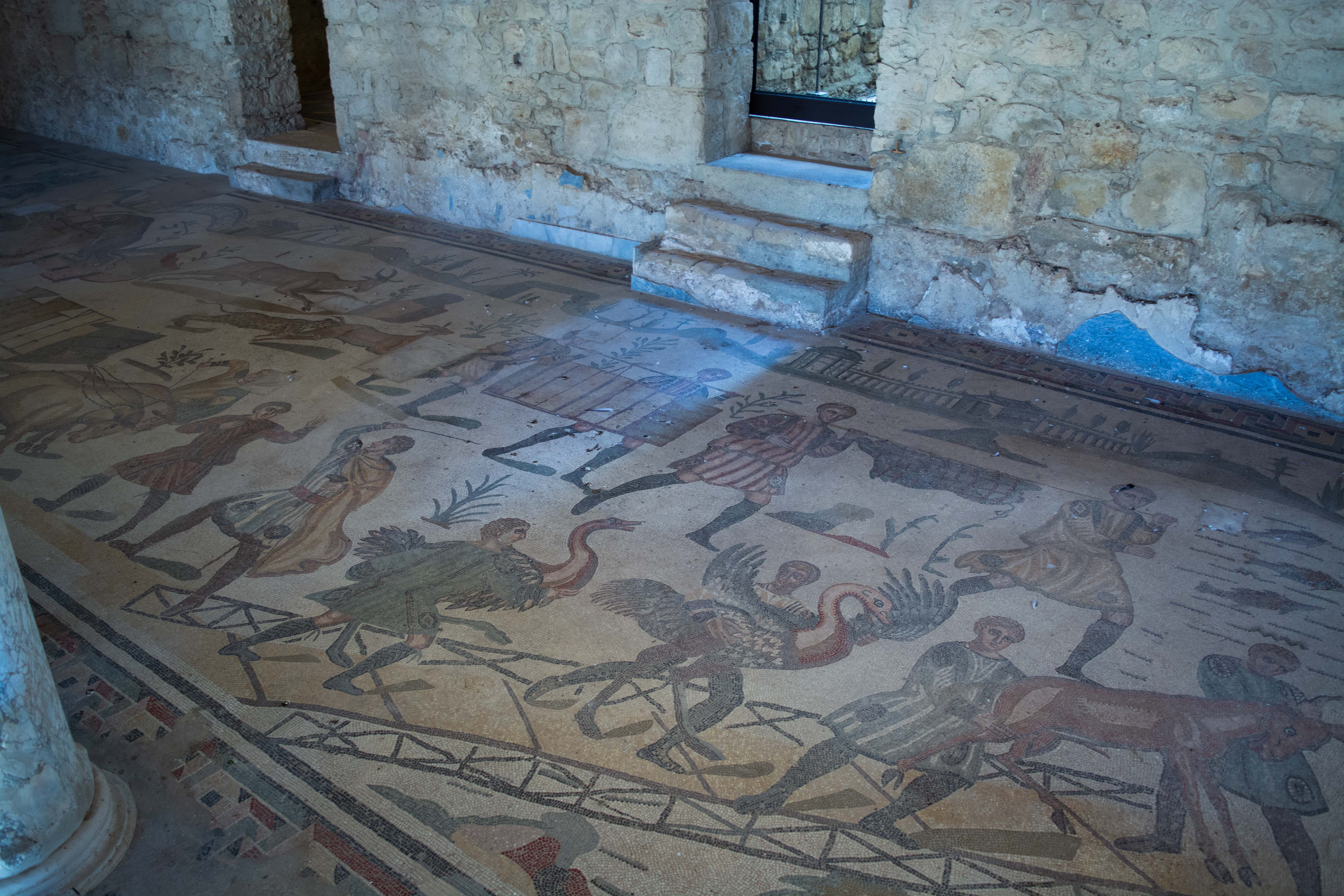
Here are a few more scenes from the hallway floor:
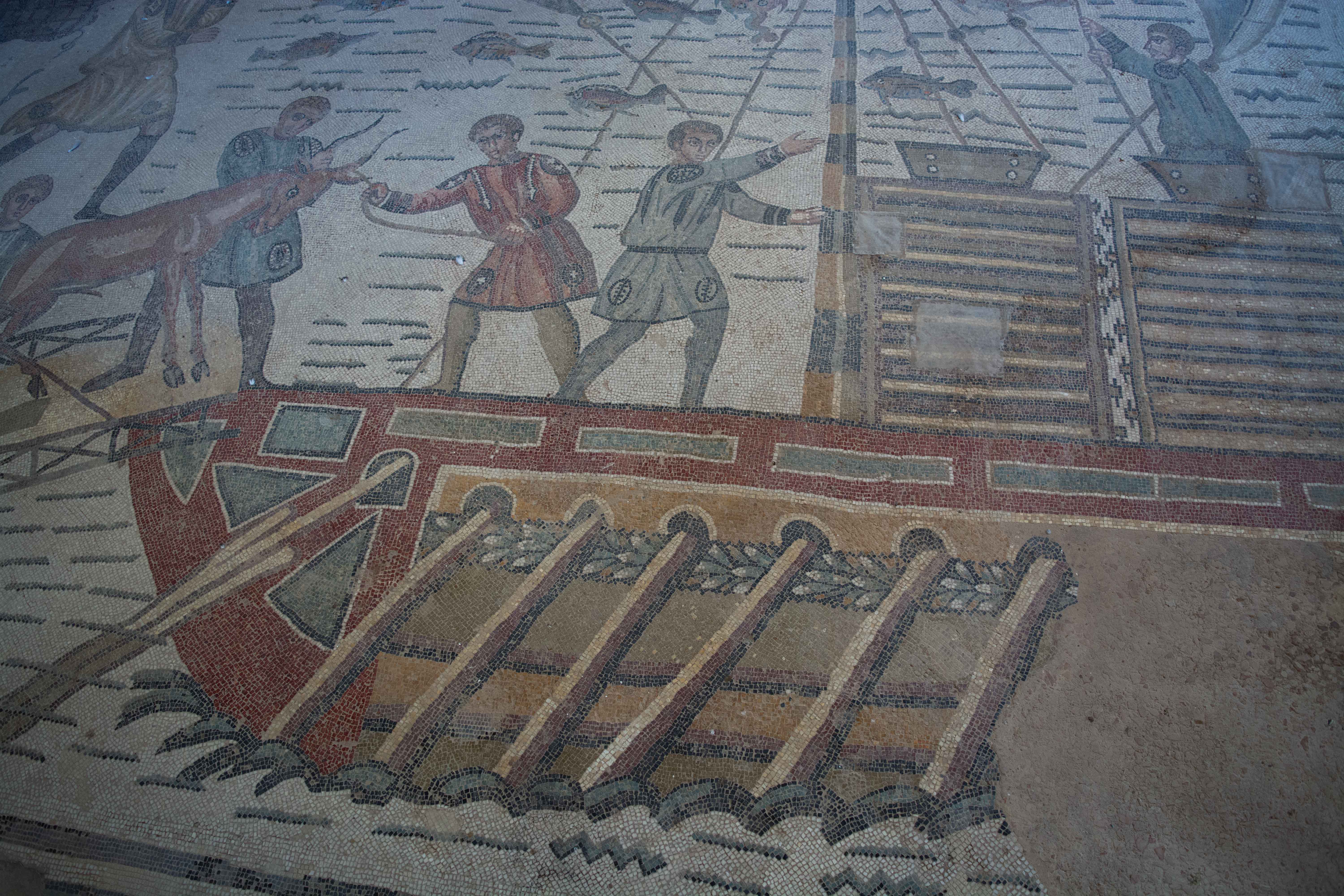
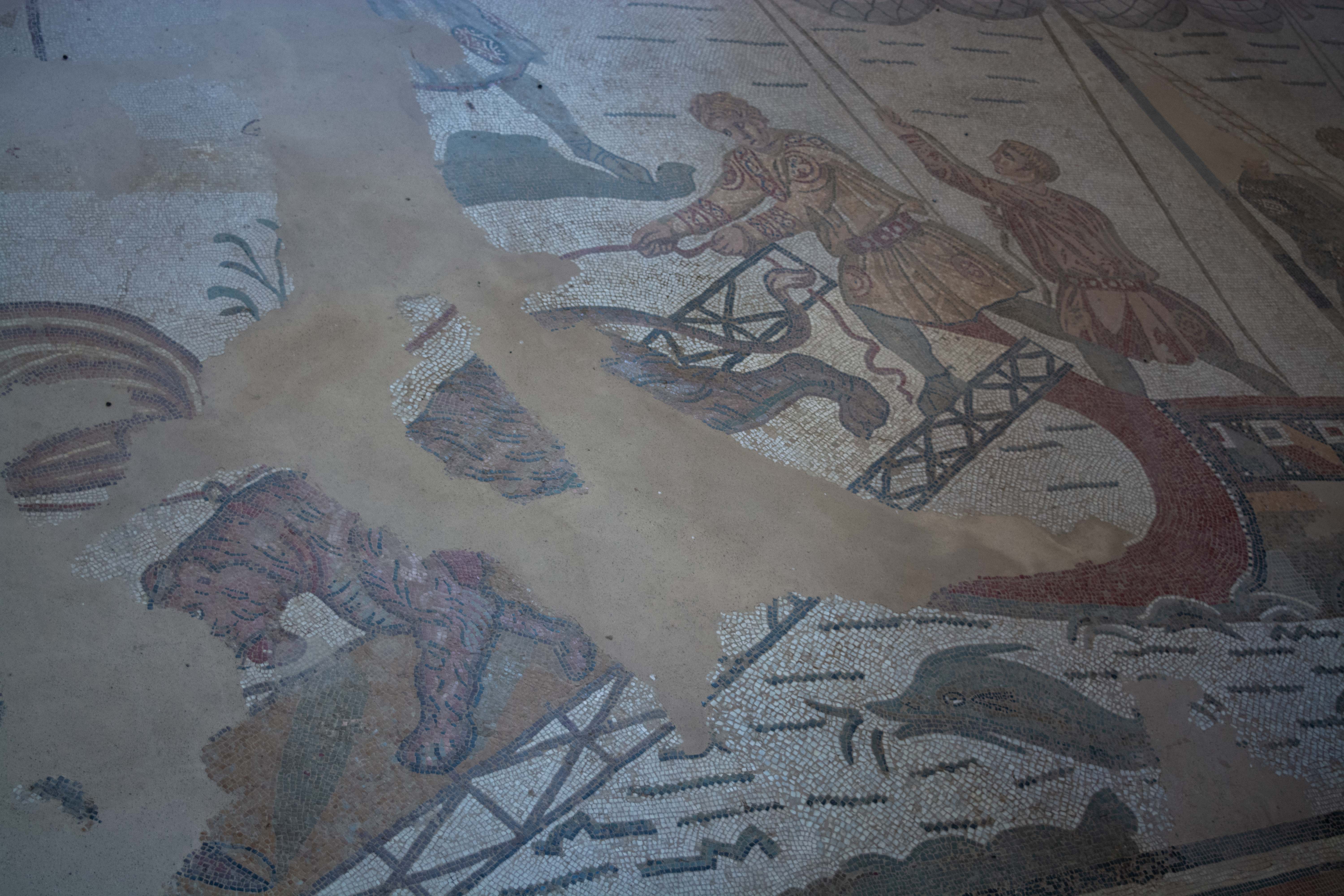
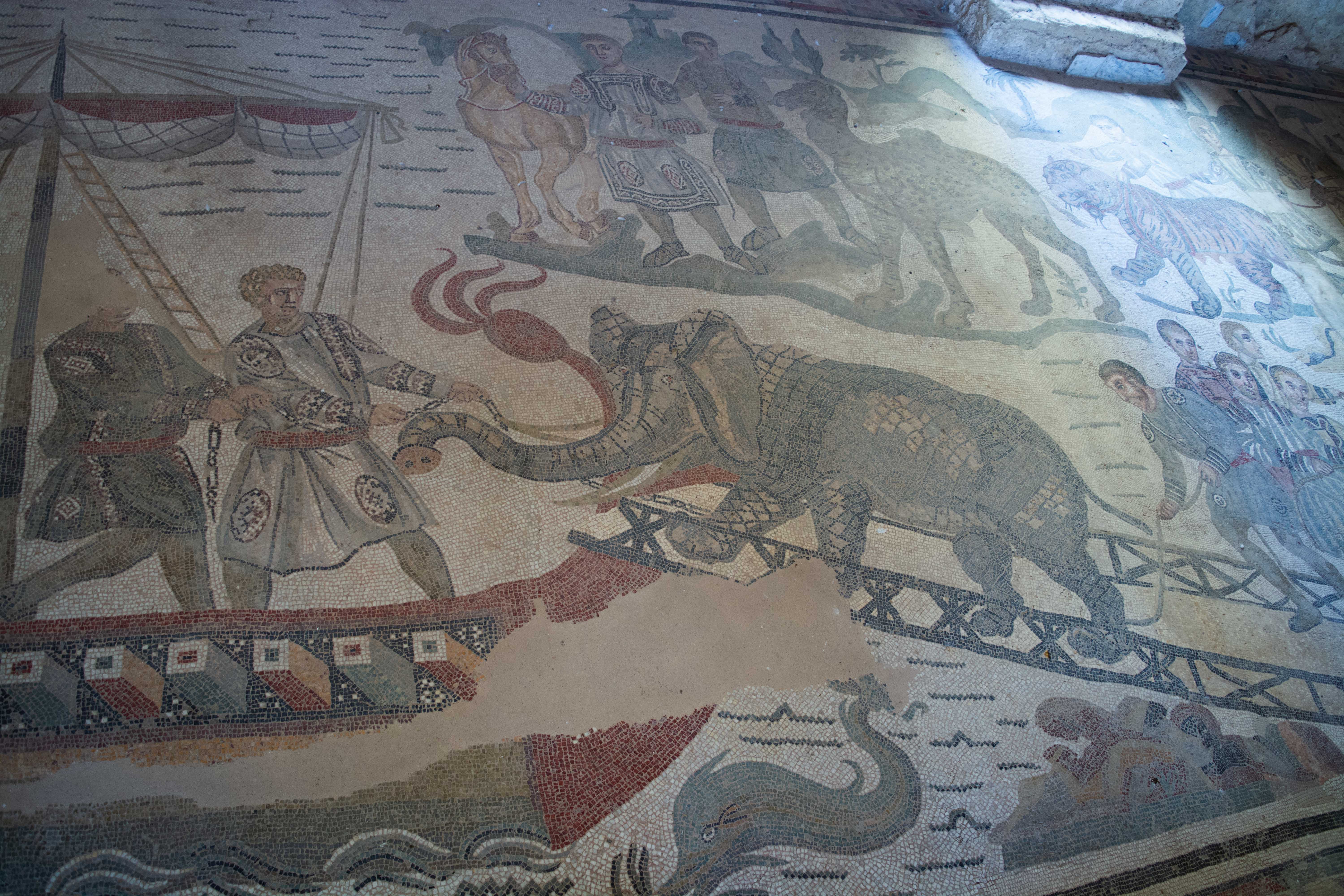
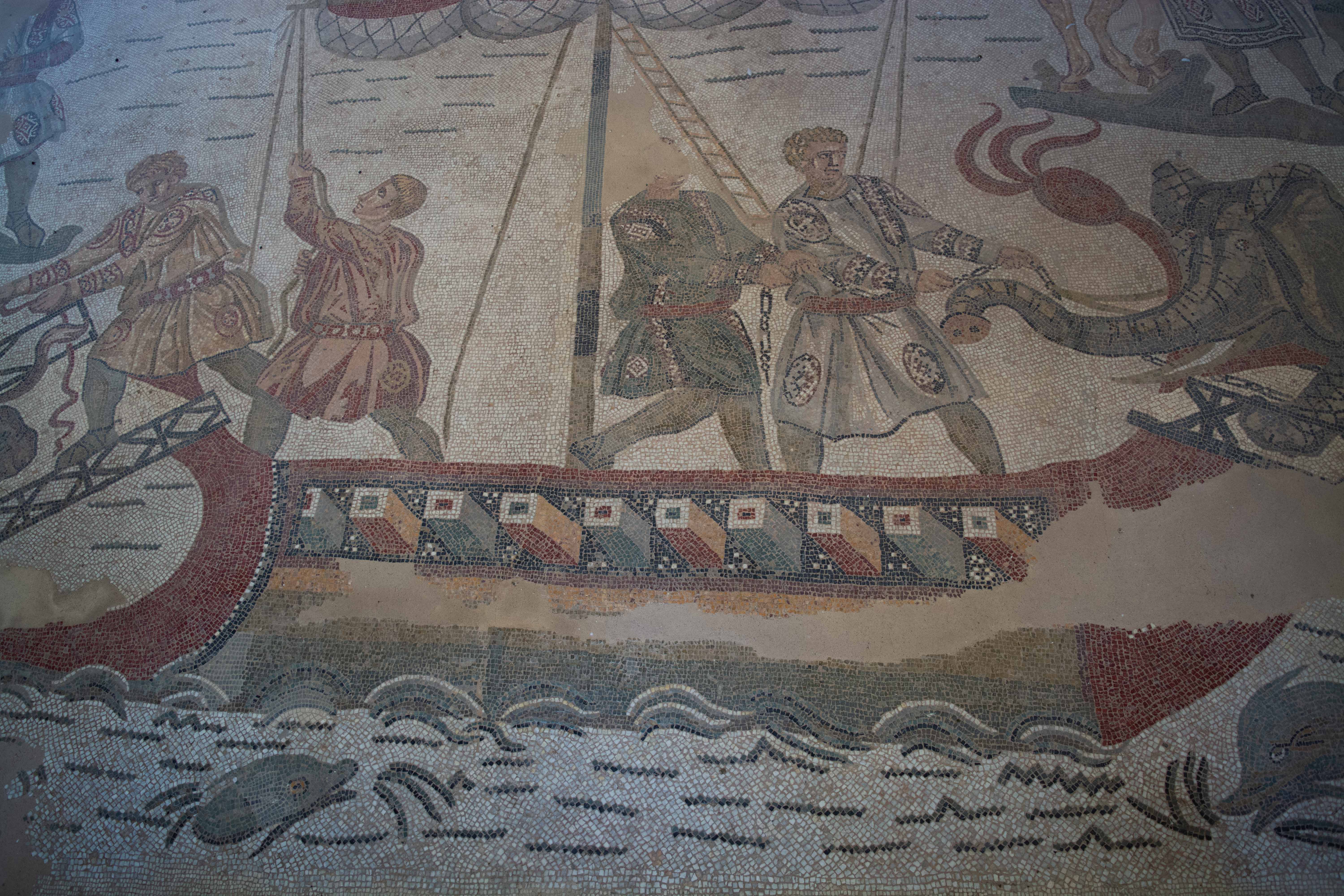
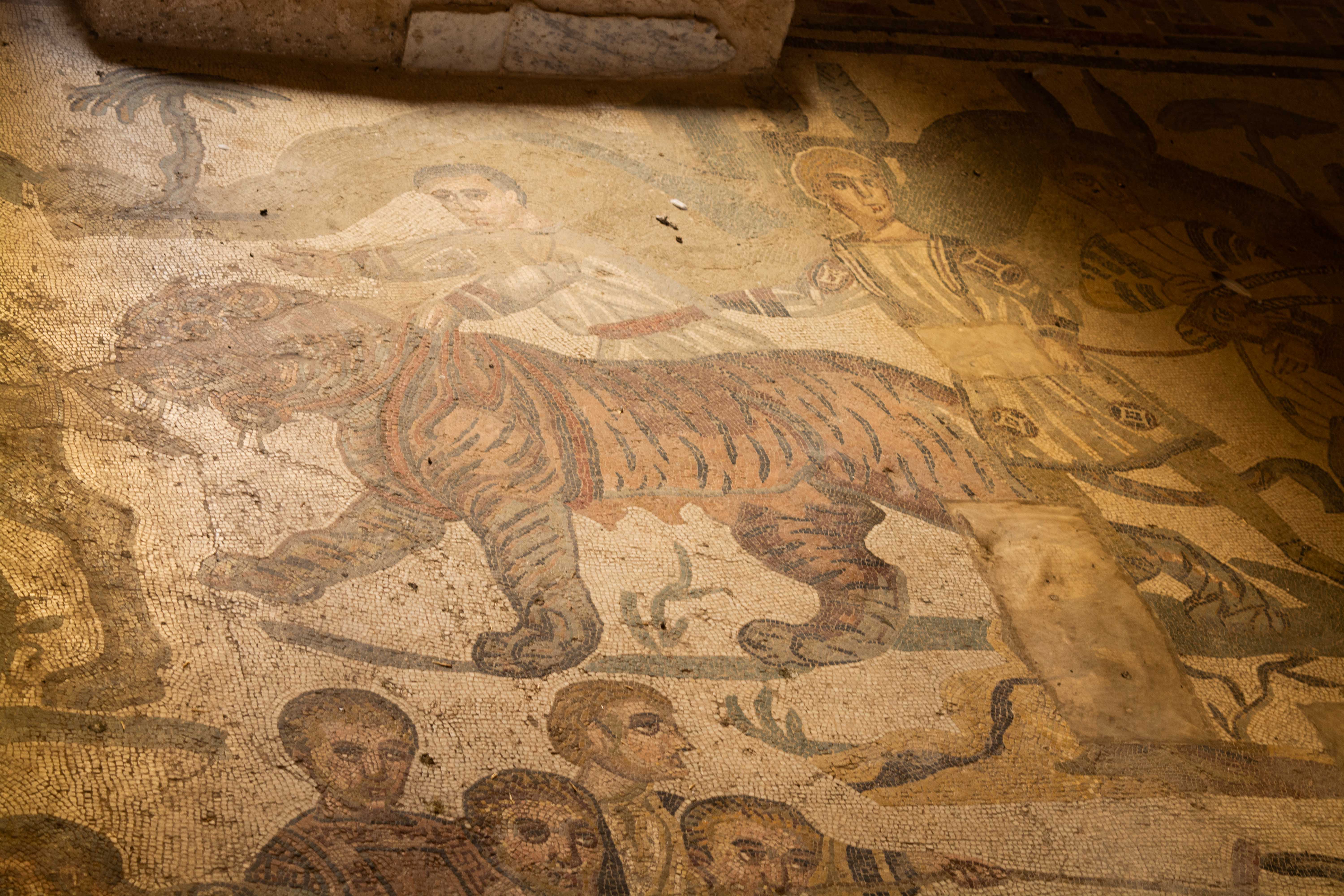
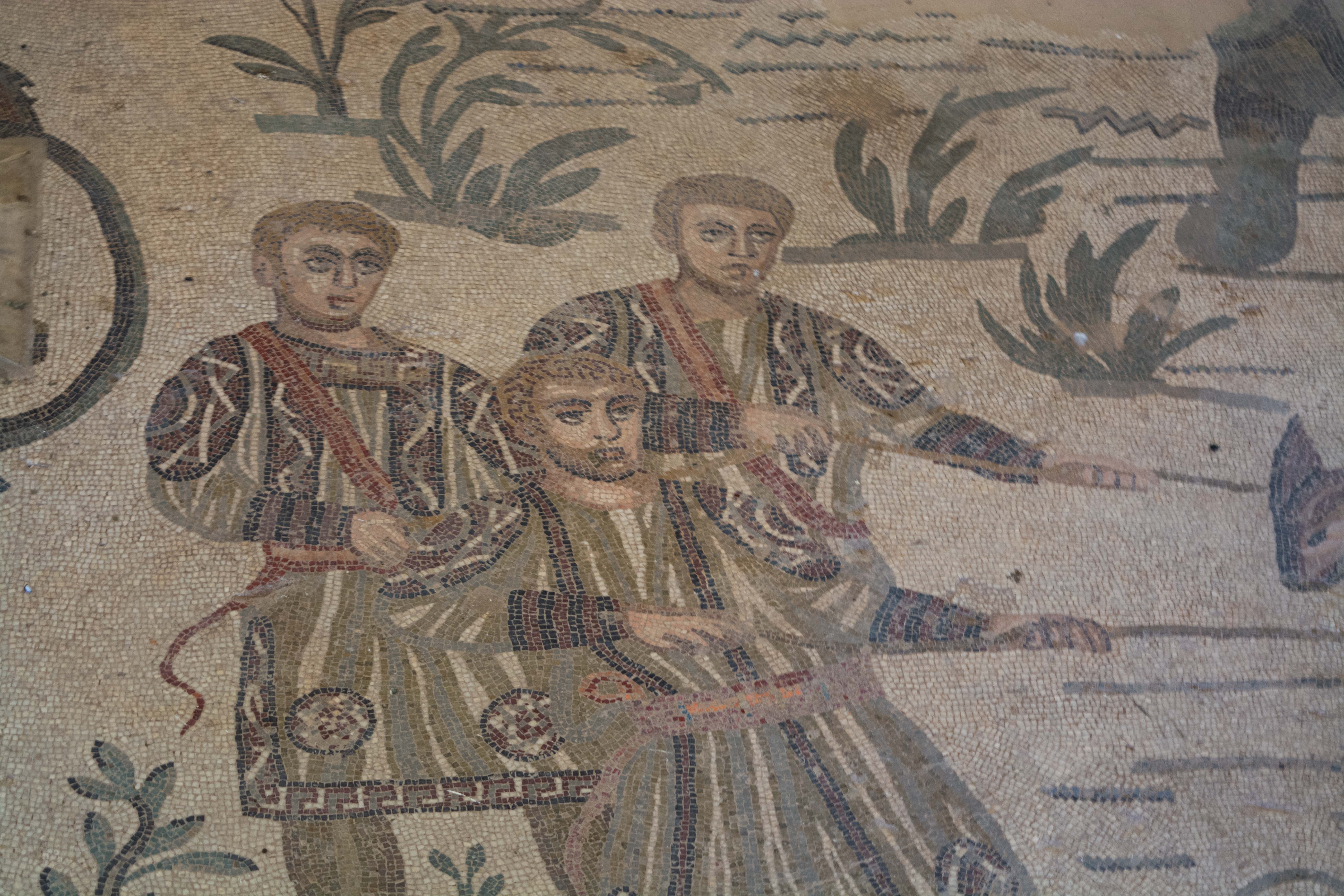
At the other end of the hall are several more rooms connected to the peristyle. This one, perhaps a servant’s room or utility room, still has traces of paint left on the walls. Roman numerals are also visible to the left of the door:
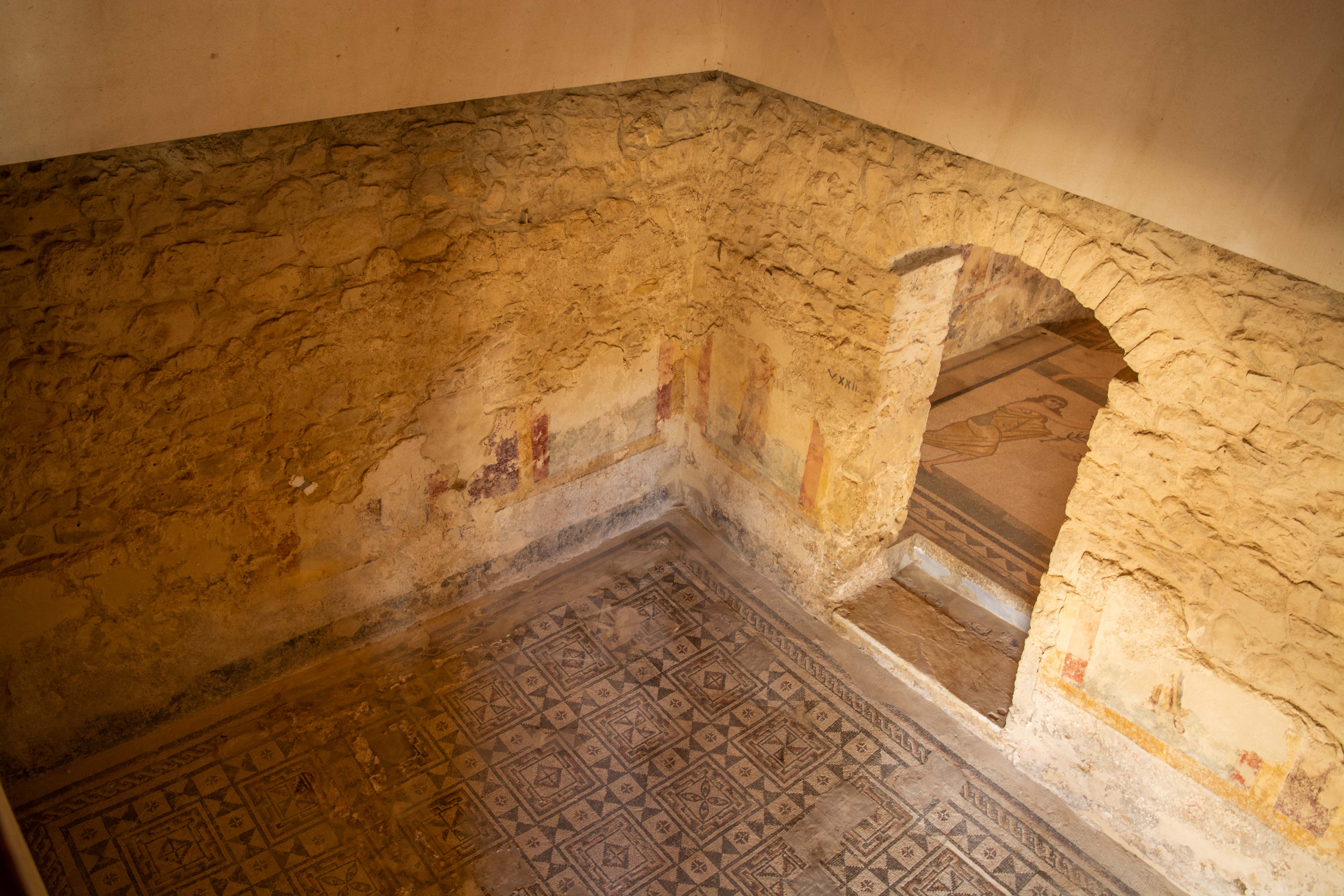
Connected to this room is one of Piazza Armerina’s most famous mosaics, known as “The Bikini Girls.” This is an illustration of 10 women wearing bikinis who appear to be competing in sporting events. Some of these activities look very much like modern track and field events. This mosaic appears to have been laid down later than the others, perhaps to replace a damaged one underneath:
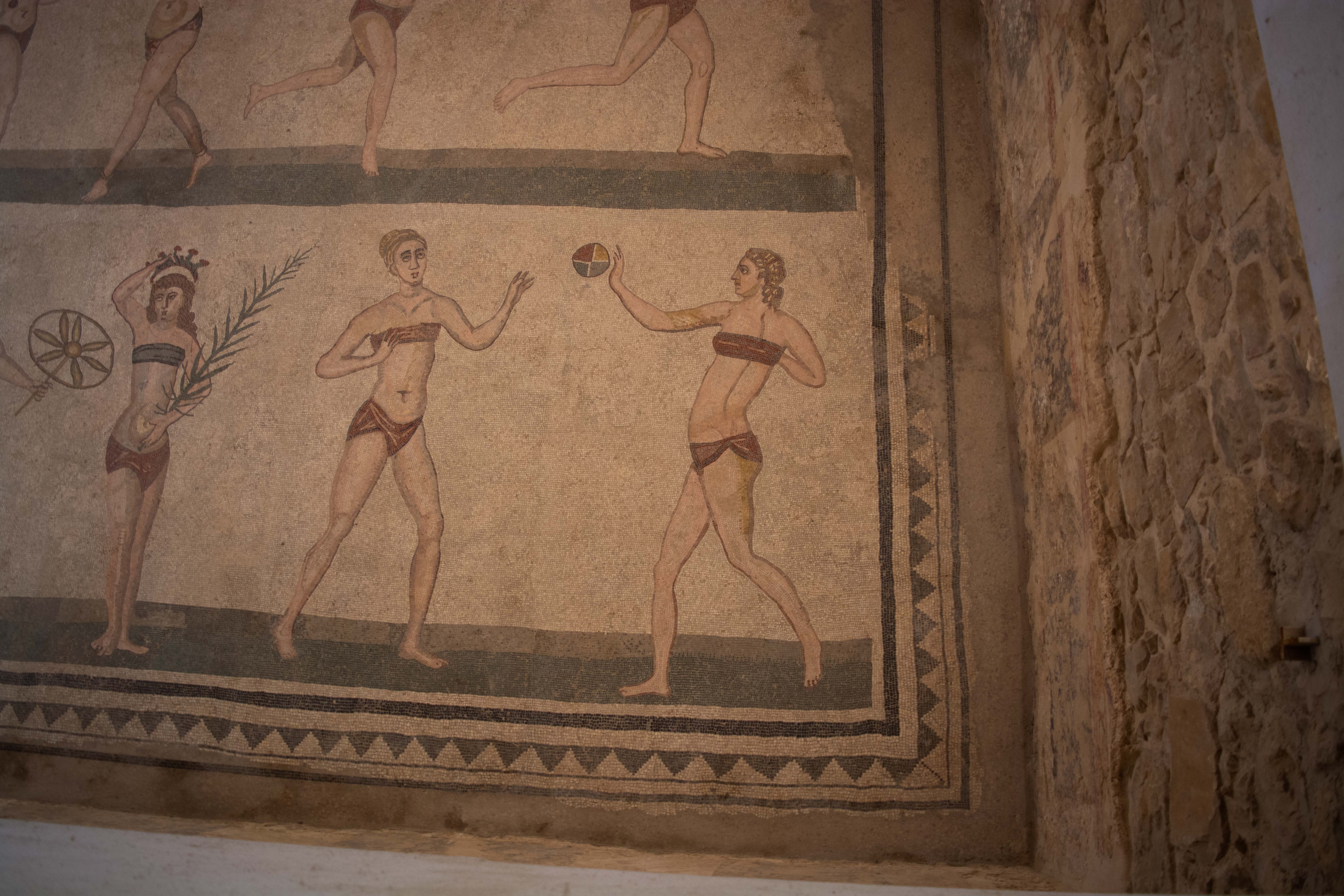
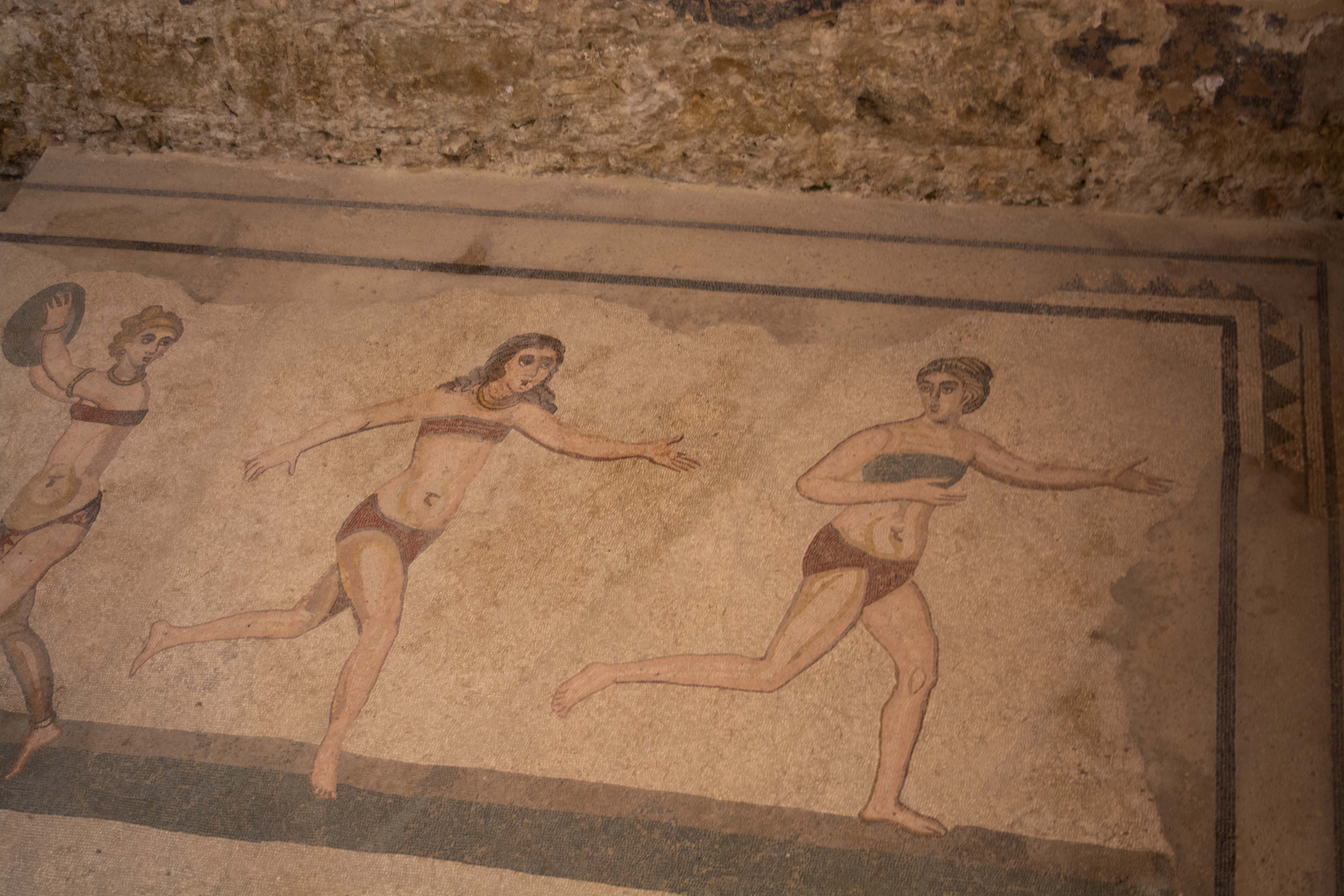
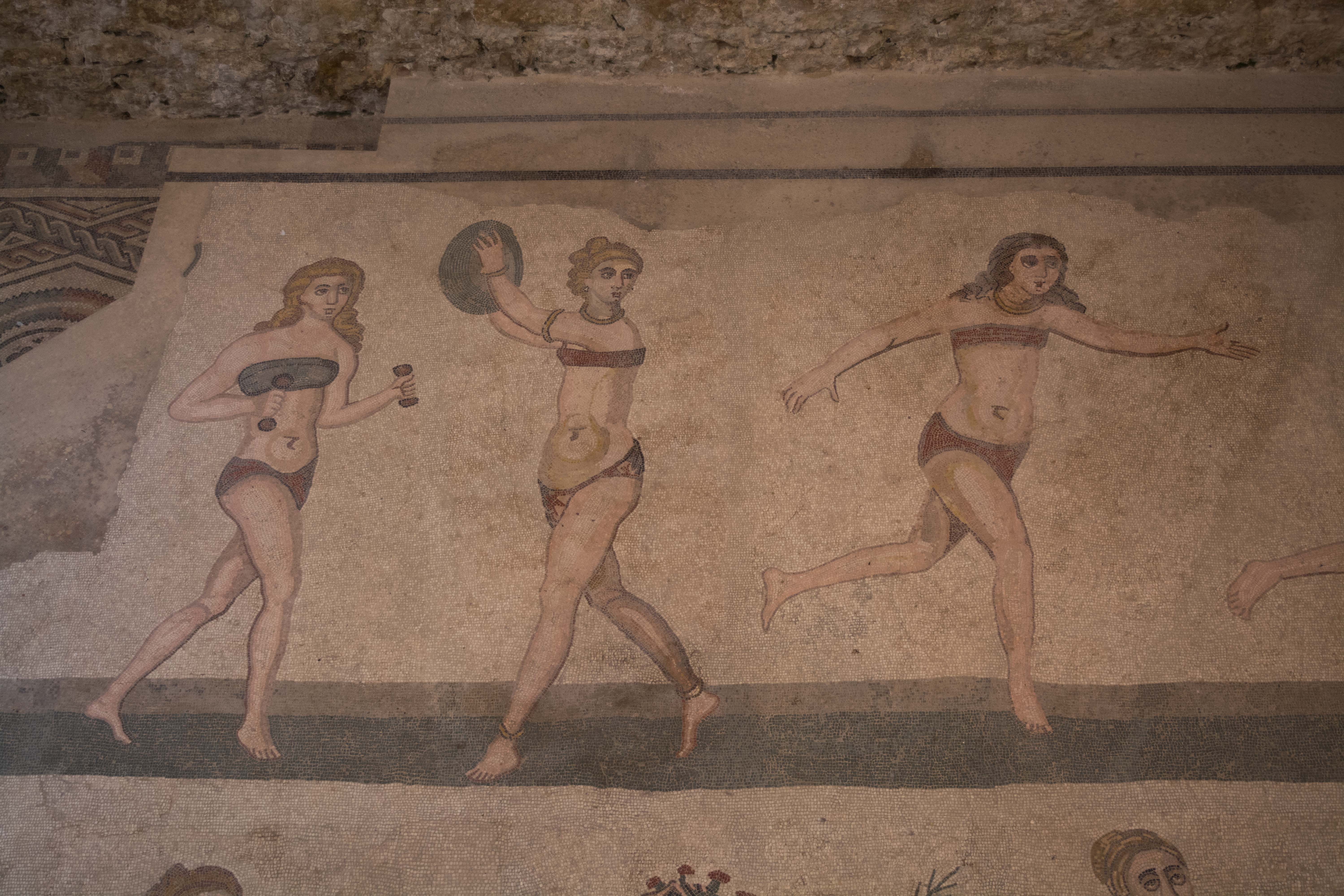
The woman at the center of the mosaic is holding a palm branch, which in Roman culture symbolizes victory. She is likely the winner of the competition:
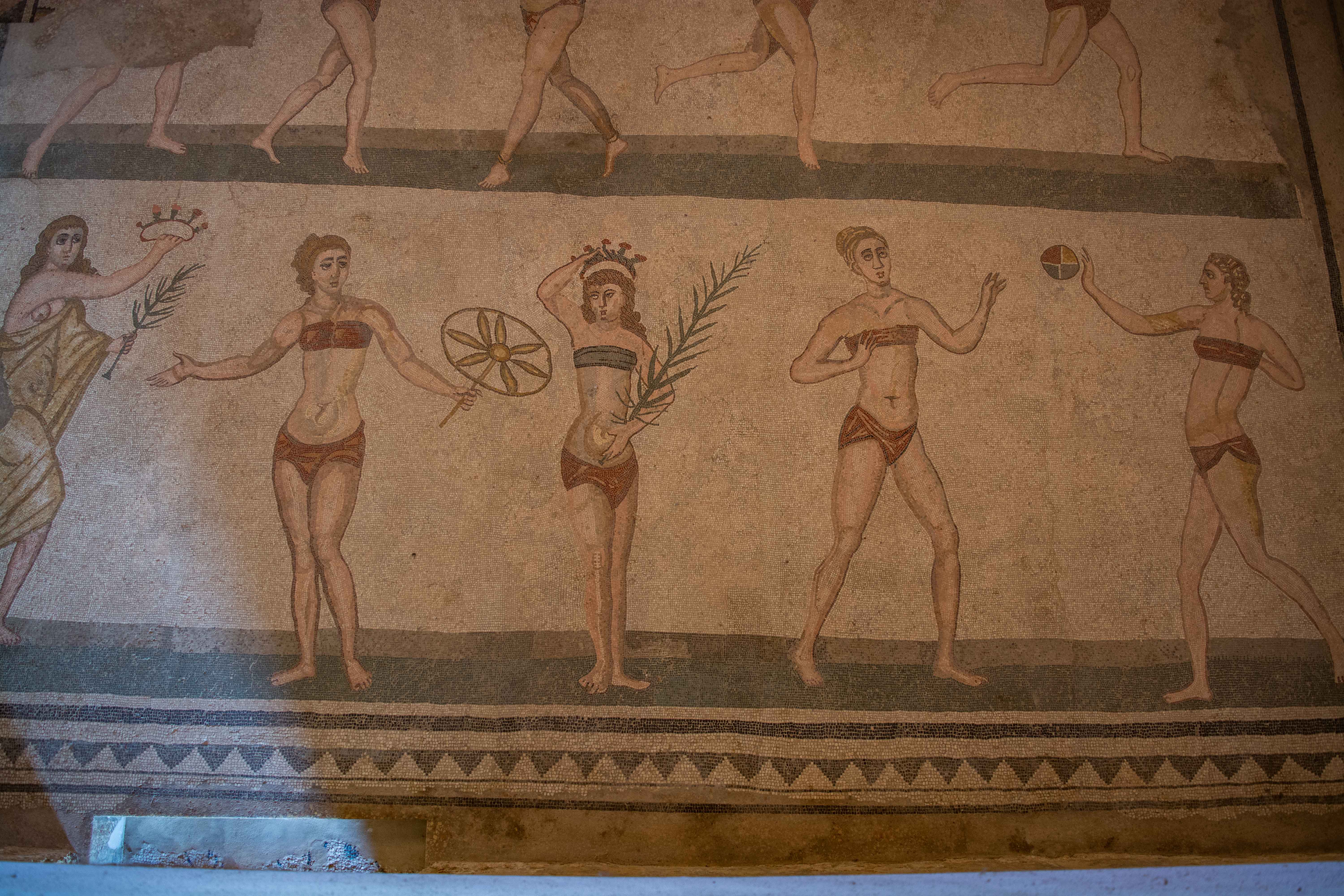
Are these scenes meant to represent the owner’s daughters competing in track and field events? Or a depiction of a competition that his wife won during her youth? We cannot be sure.
Heading back down the other side of the hallway, I could not resist getting a few more shots from the Hall of the Great Hunt:
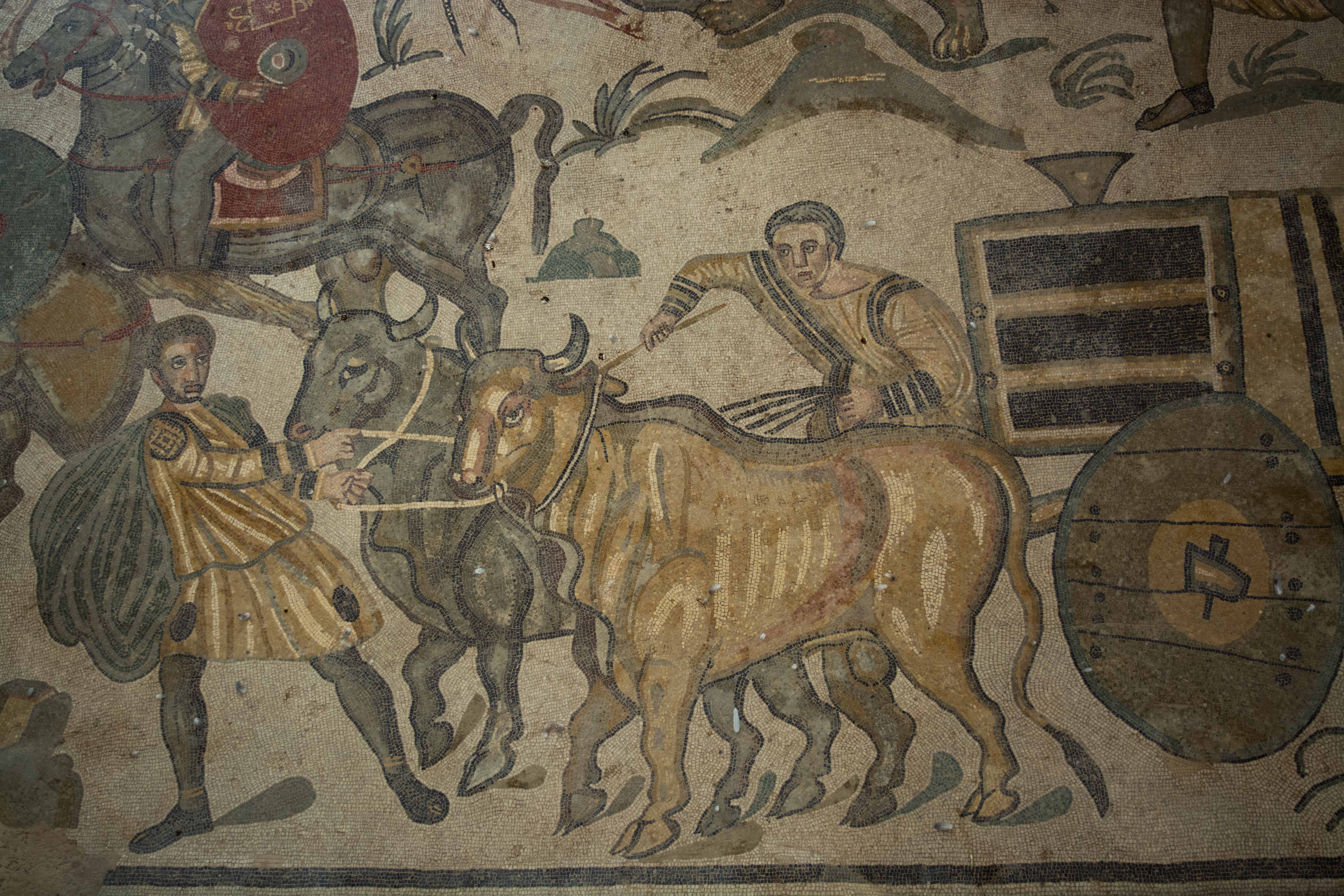
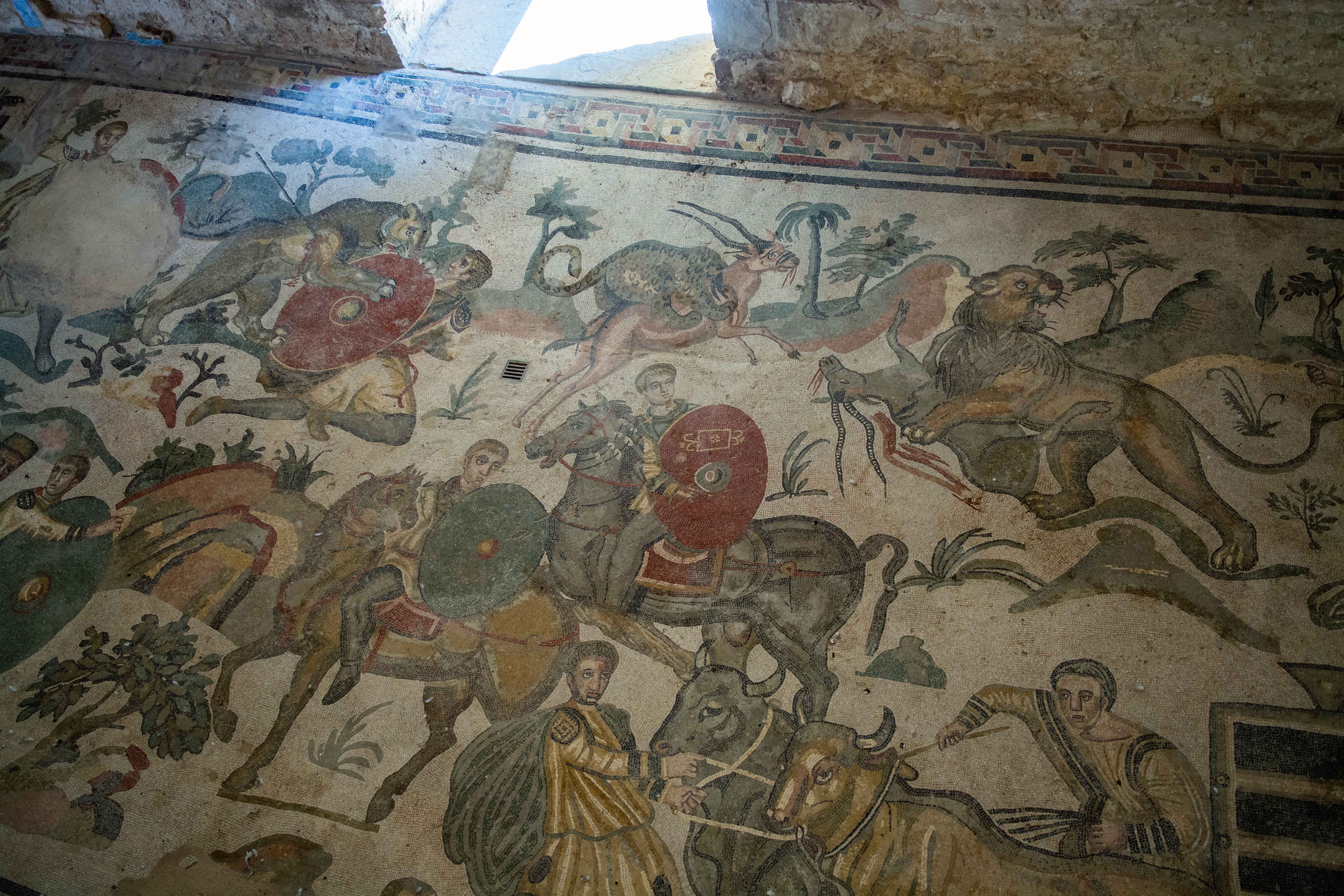
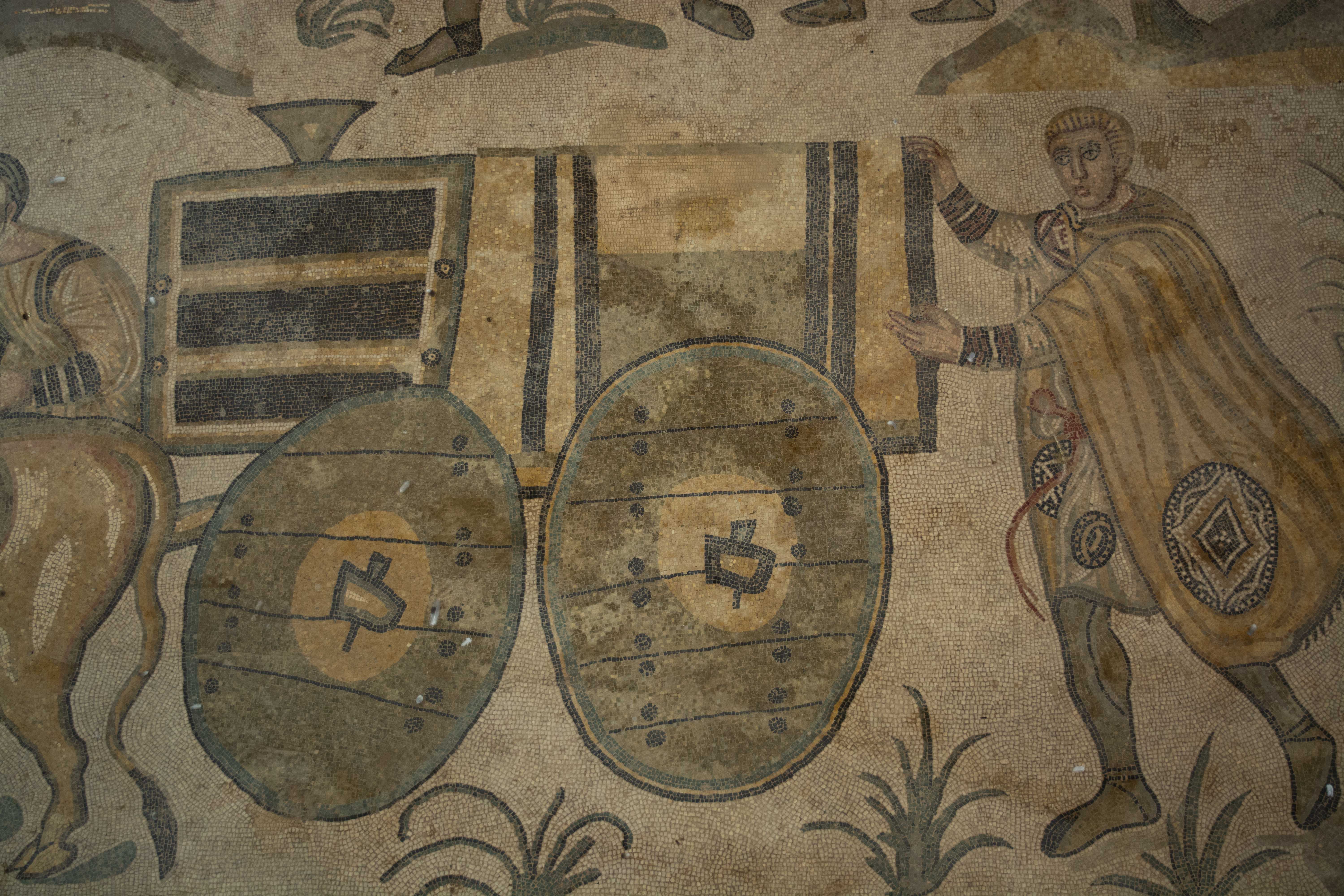
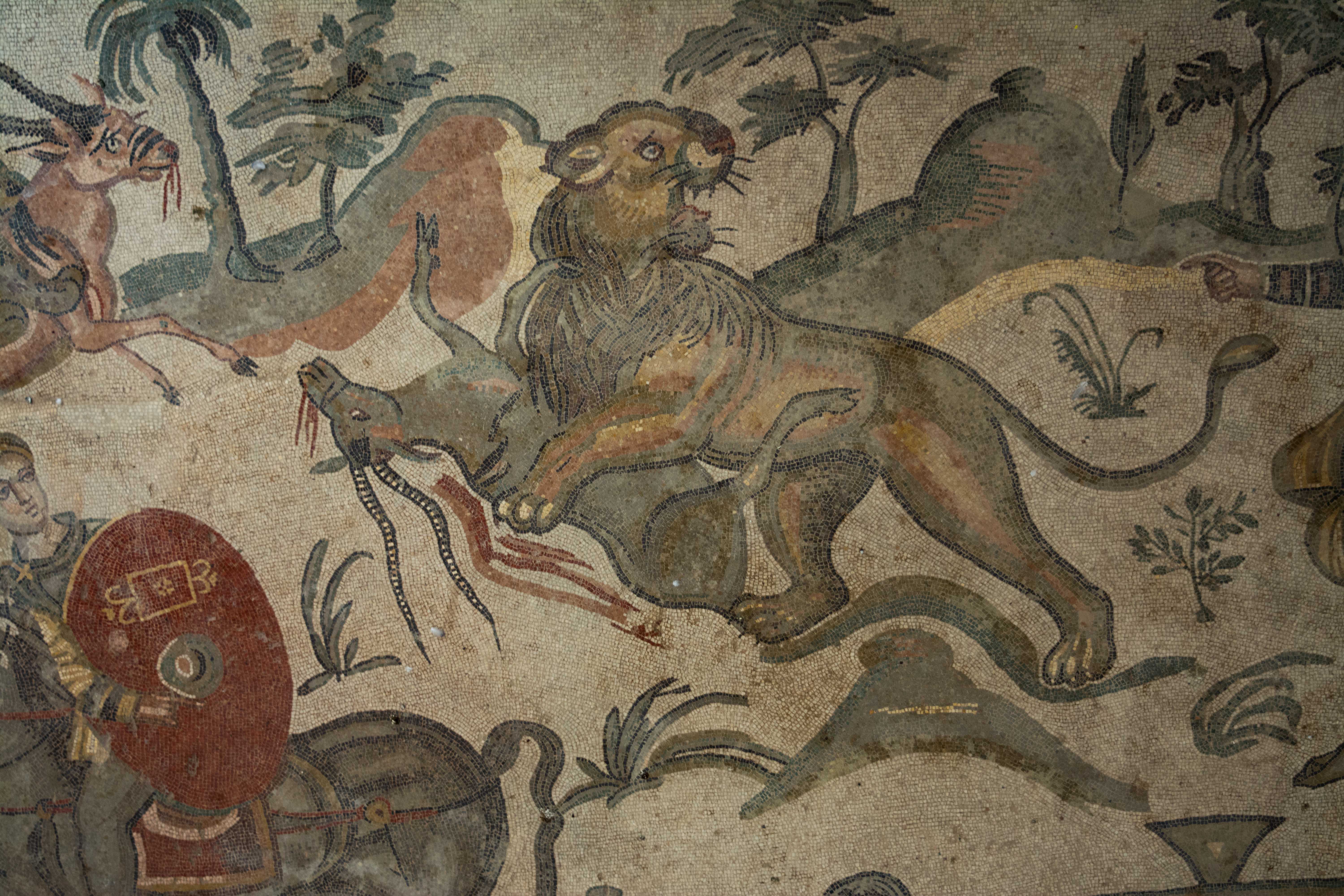
A room nearby contains another chariot racing scene. This one provides a better view of the arena’s spine, with an obelisk in the center:
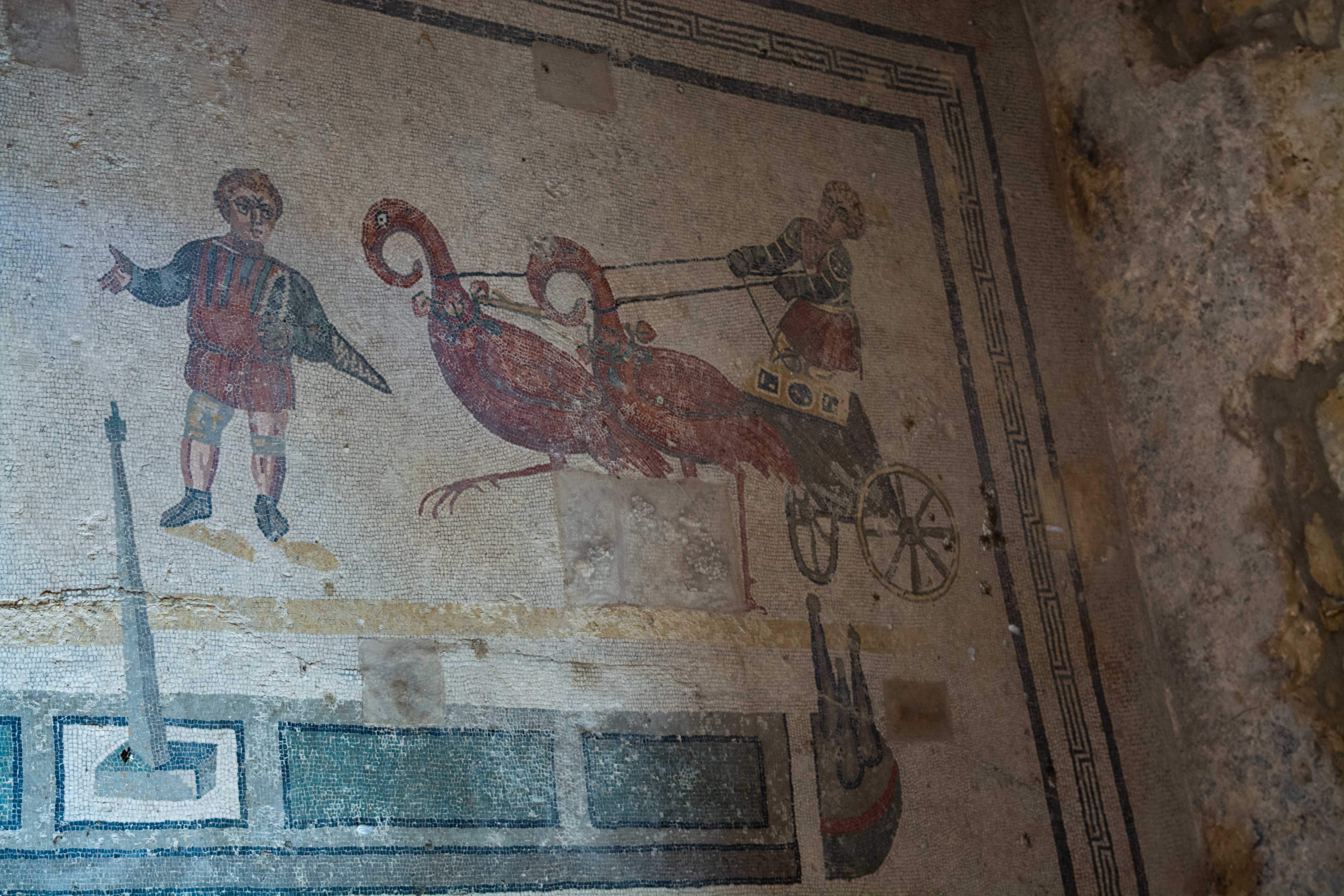
This room contains what may be a battle scene:
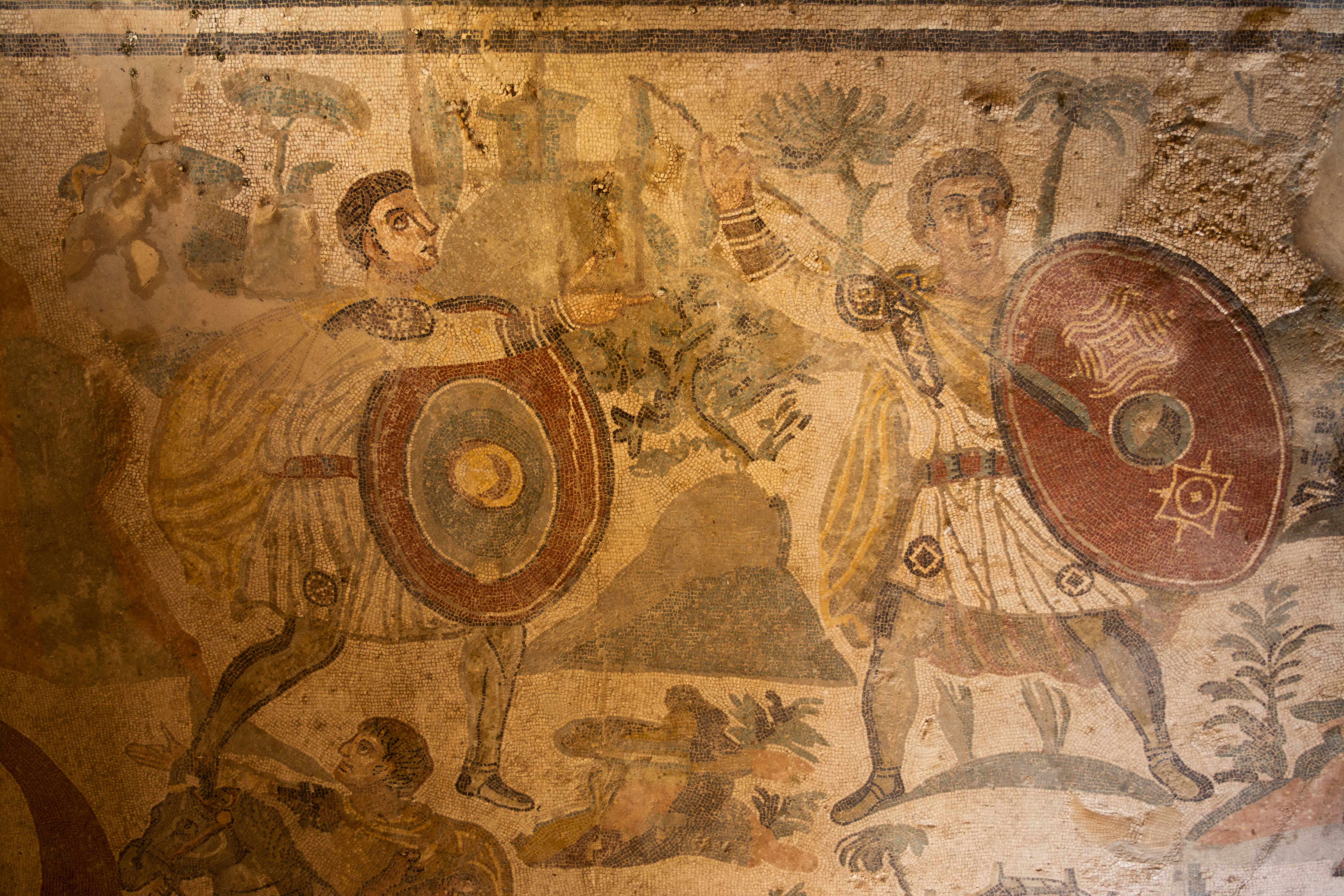
And this room shows a series of figures gathered around a table with jugs buried underneath. The jugs have Roman counting units written on them, probably meant to quantify what was inside:
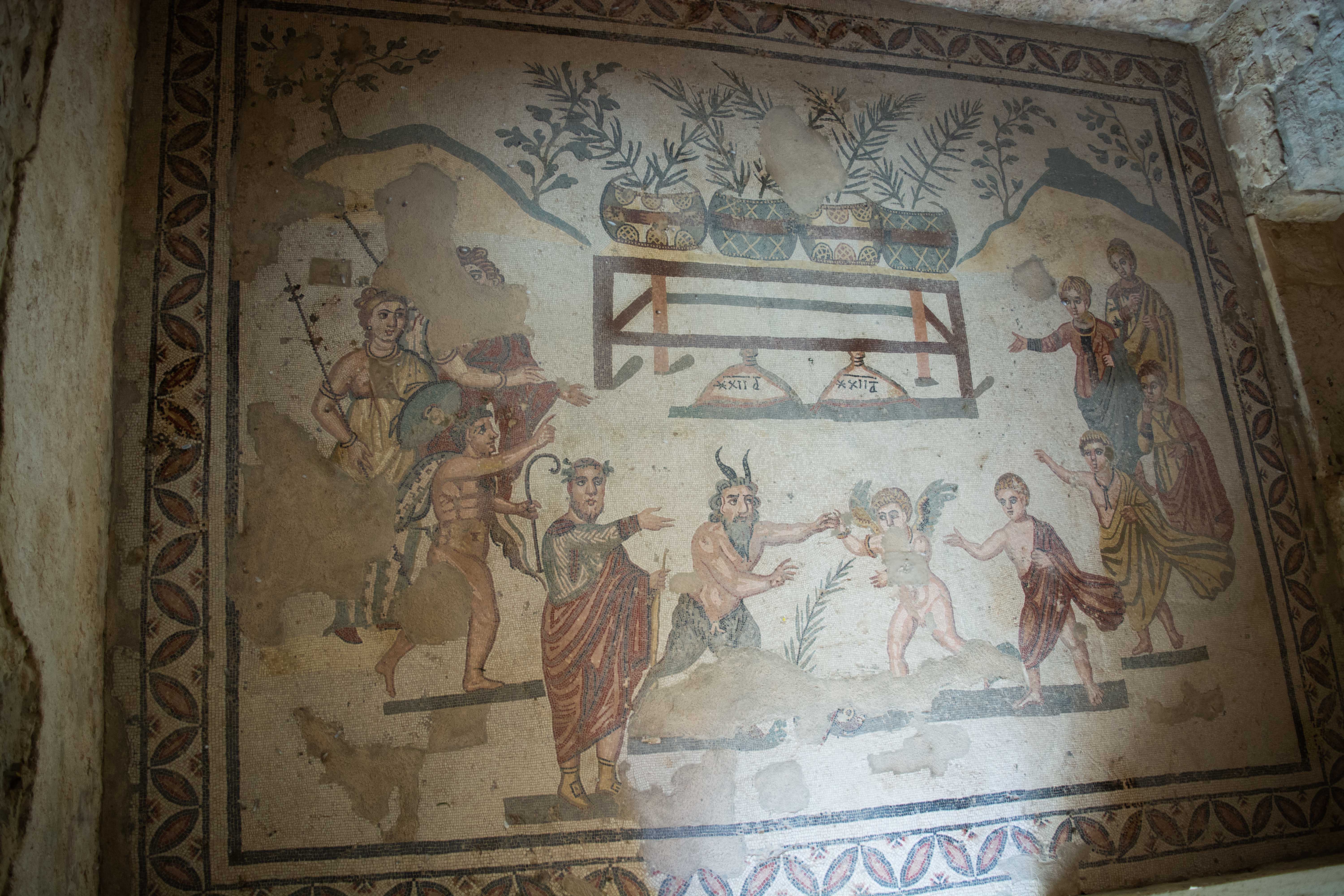
Here is another room with a series of hunting and wildlife scenes:
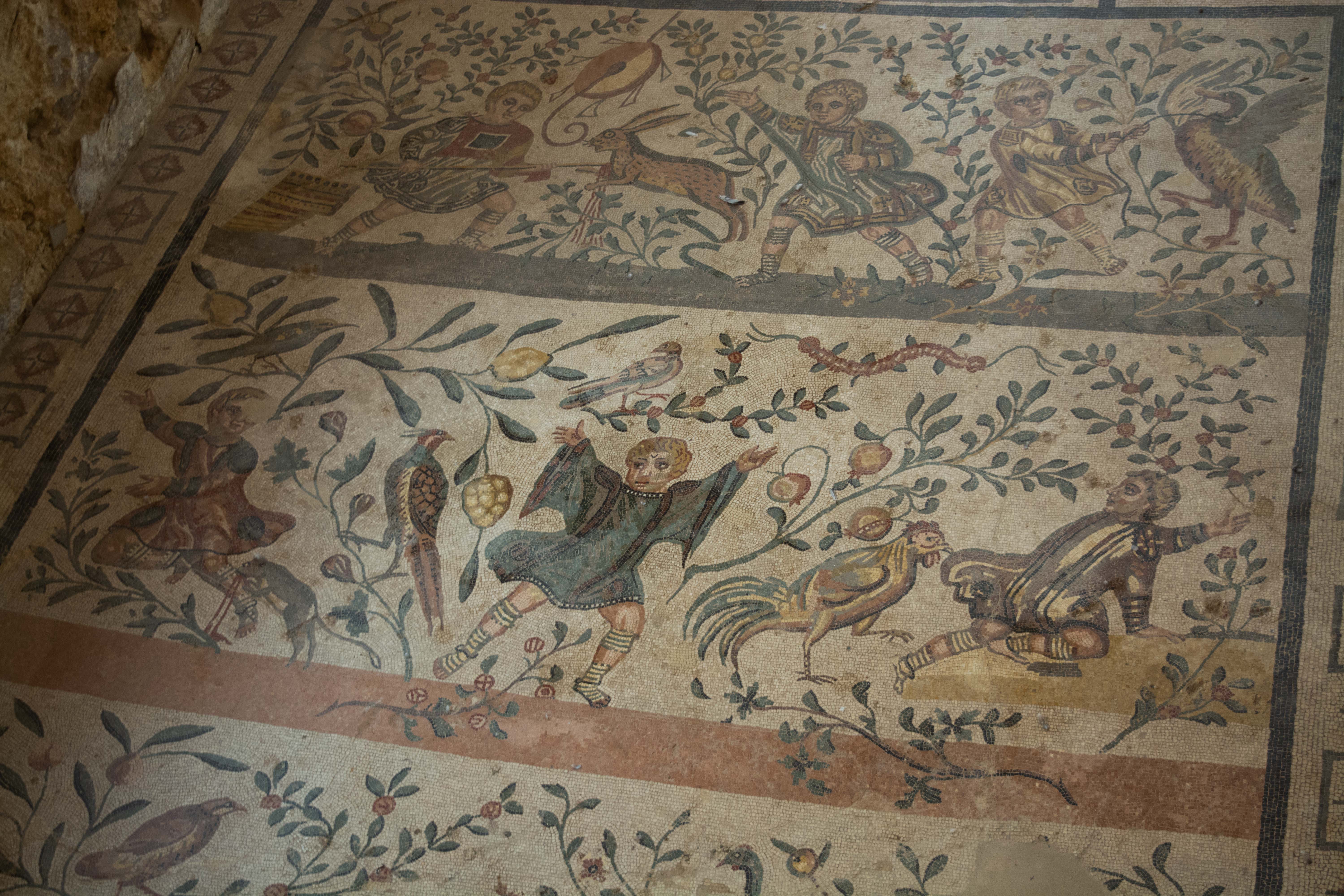
The floor of this room shows a large variety of real and mythical sea creatures:
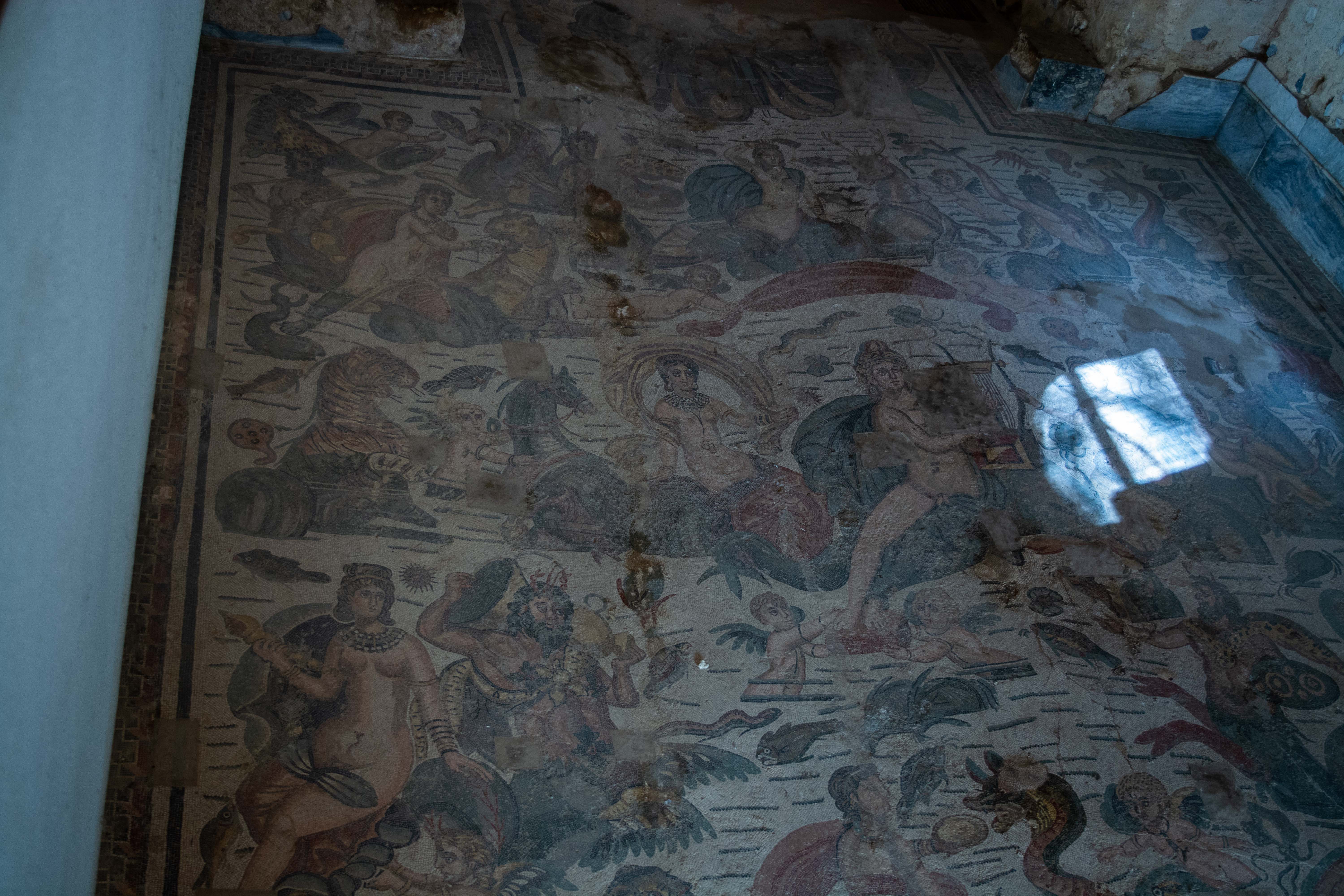
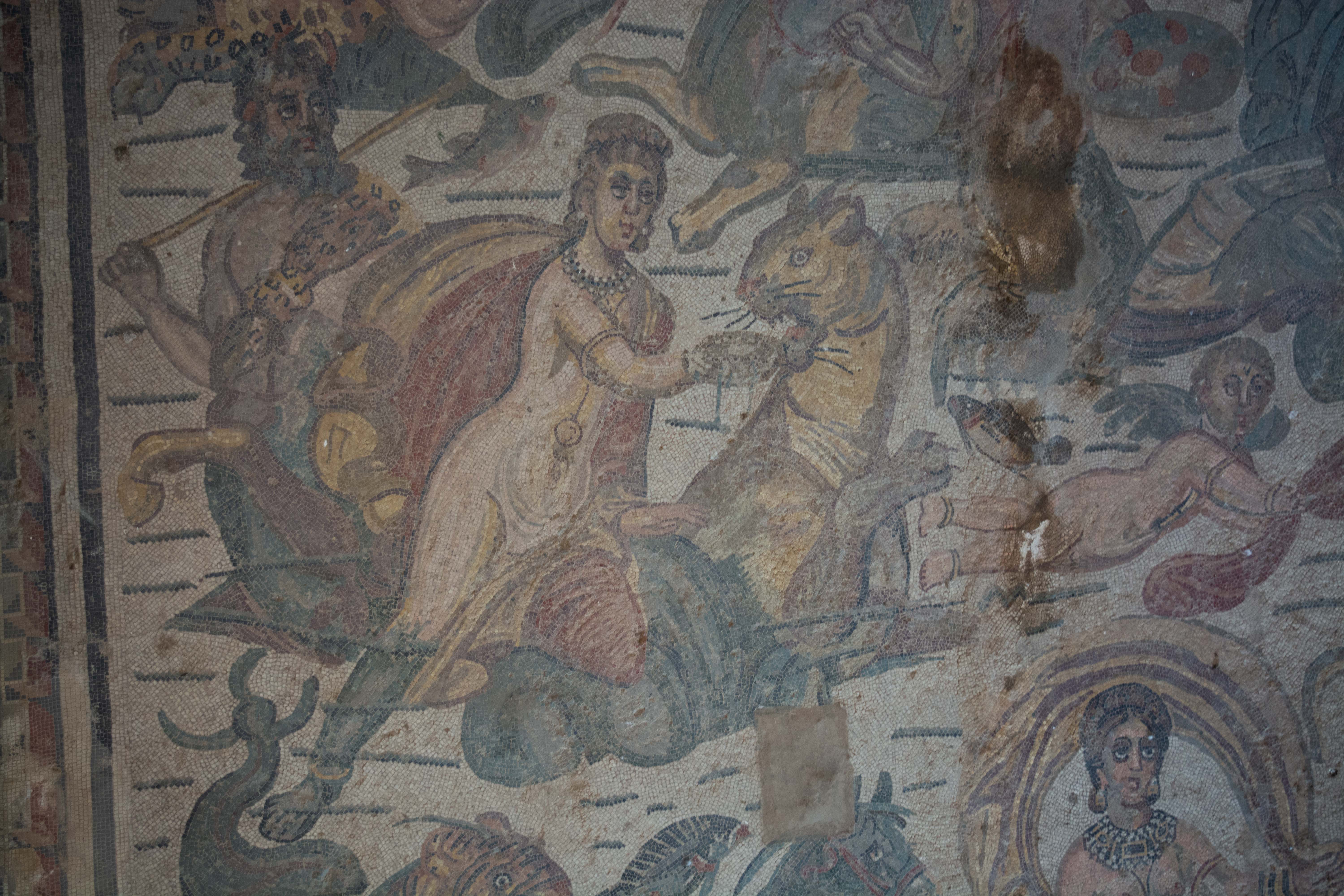
One of the largest rooms is the house is a long and narrow marble-clad room known as “The Basilica.” The floors and walls of this room would once have been completely covered by a variety of colorful marble patterns:
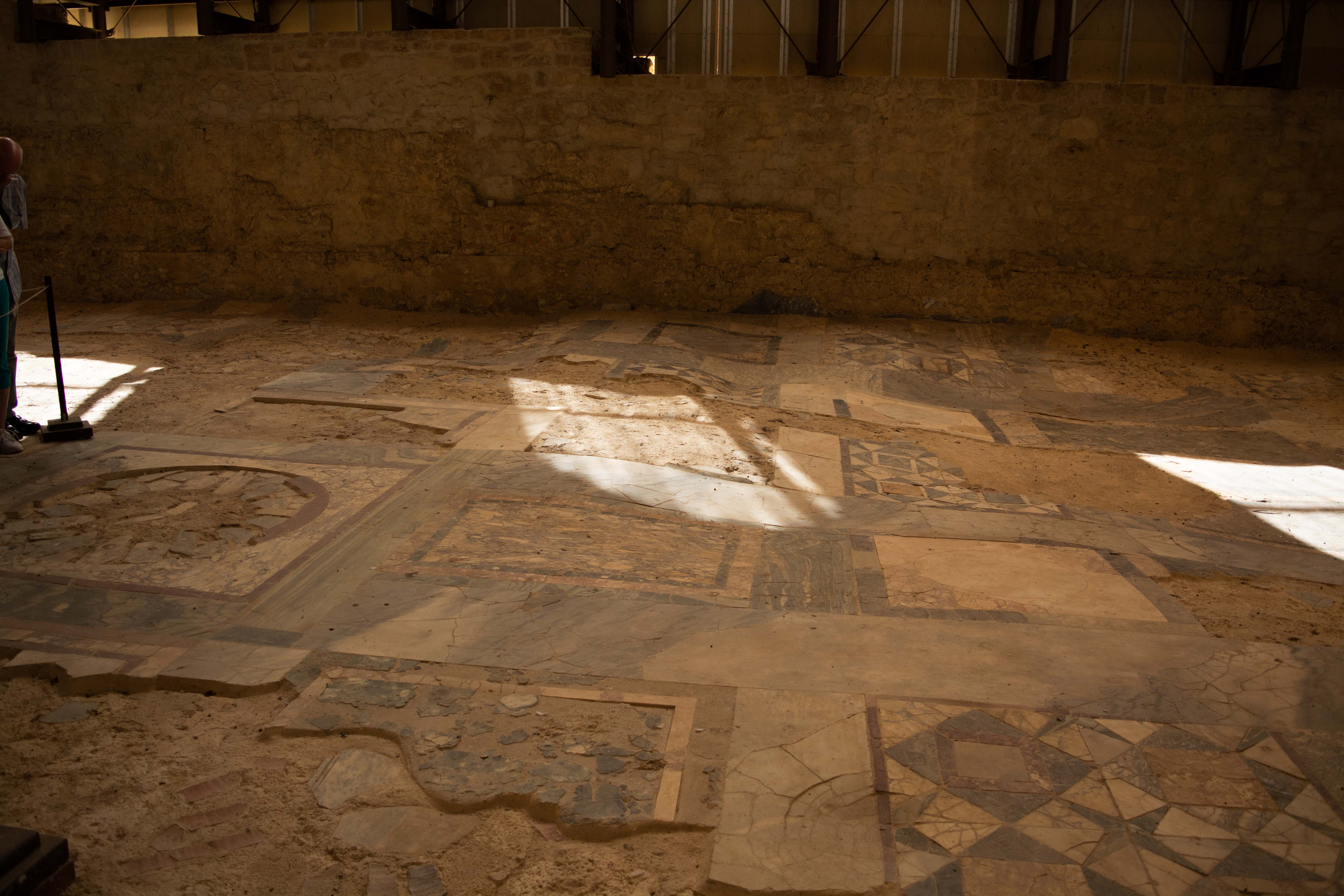
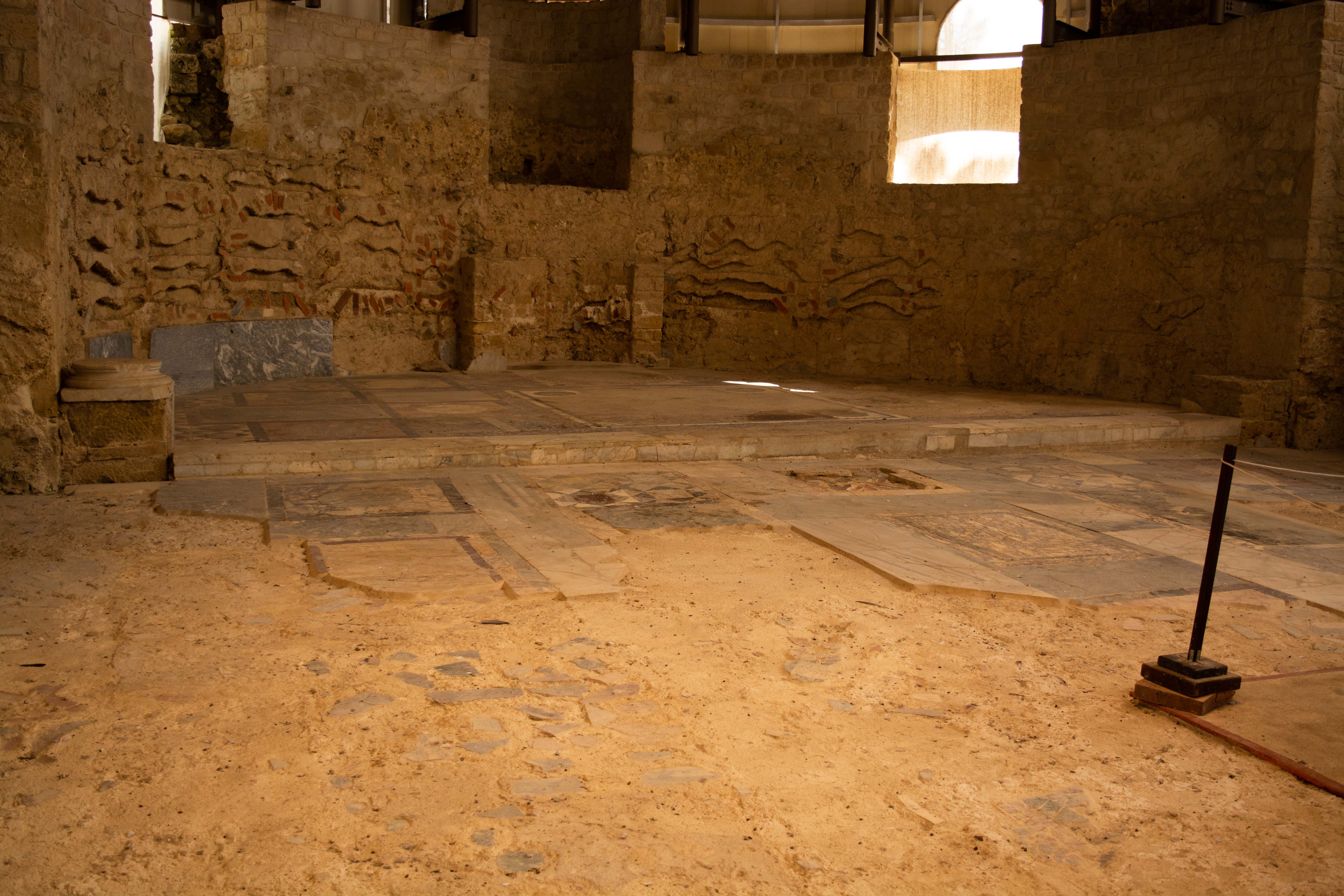
Some of the marble patterns still remain on the floor:
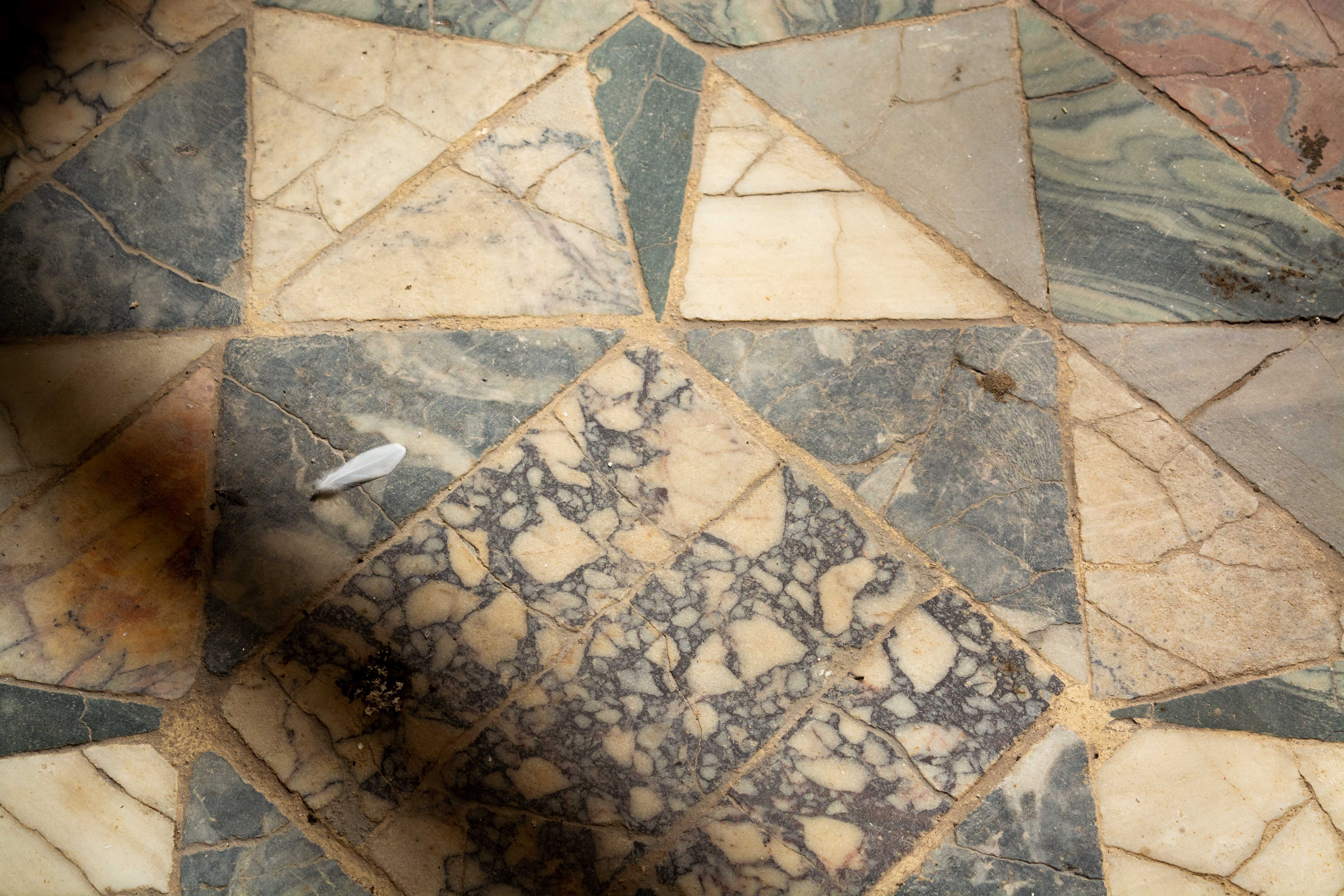
One of the last rooms we visited had a brightly colored mosaic floor with several varieties of fruits and nuts surrounded by geometric patterns:
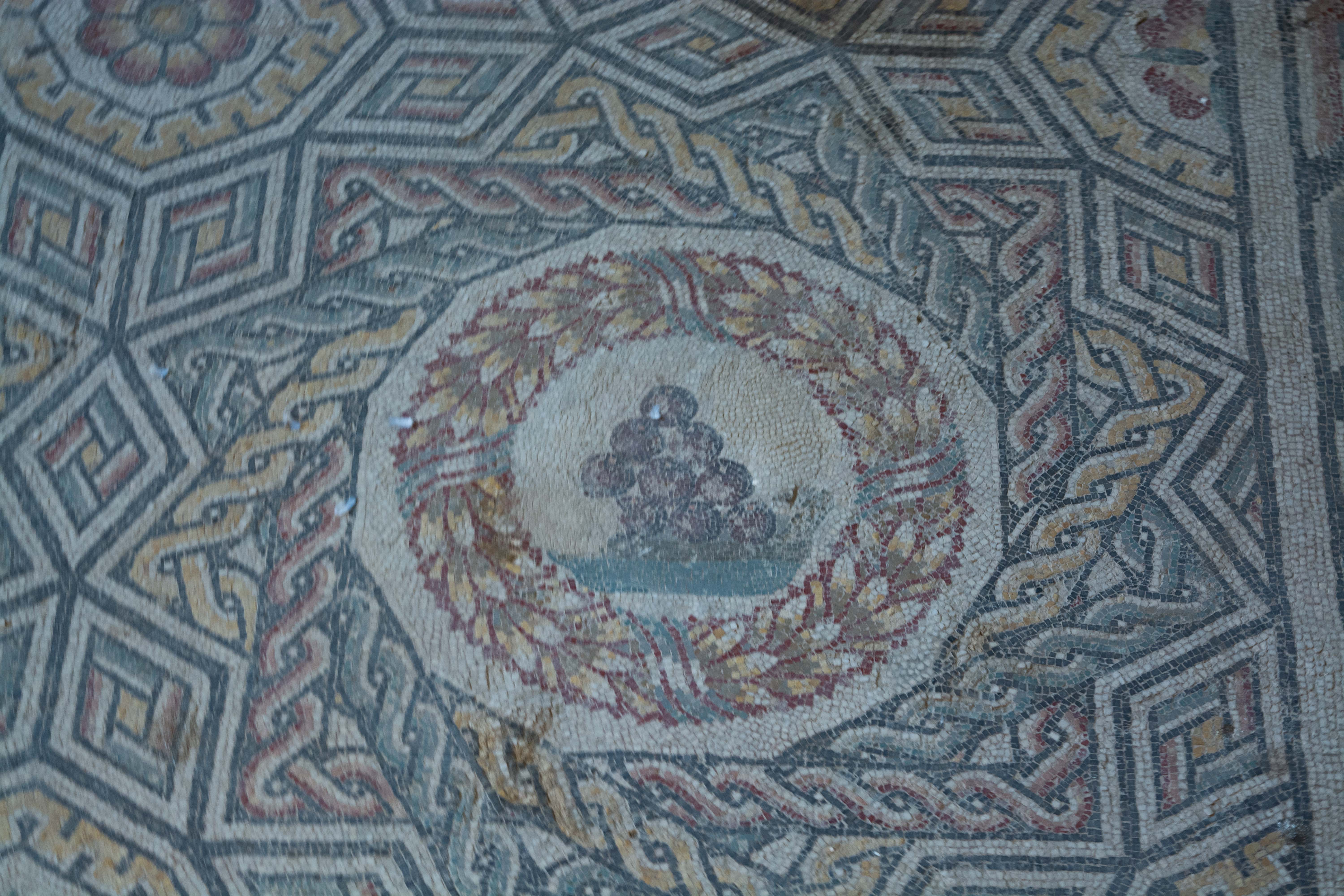
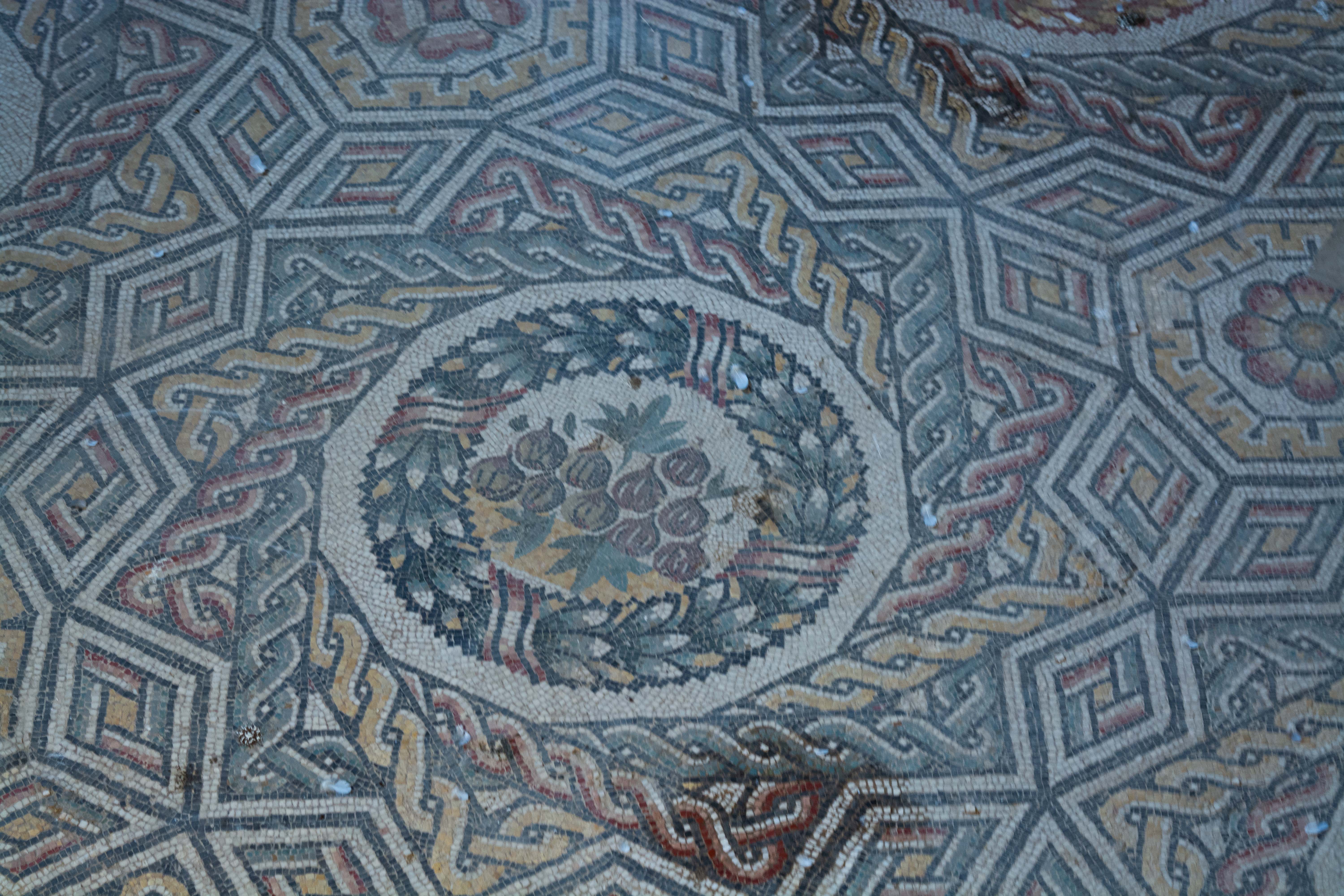
One of the most recognizable mosaics in the villa is this depiction of a scene from “The Odyssey” by Homer. This enduring book, still read in almost every High School literature class, recounts Odysseus’ many trials and clever exploits while on his way home from the Trojan War. In this scene, Odysseus is giving a large and undiluted cup of wine to the giant cyclops Polyphemus:
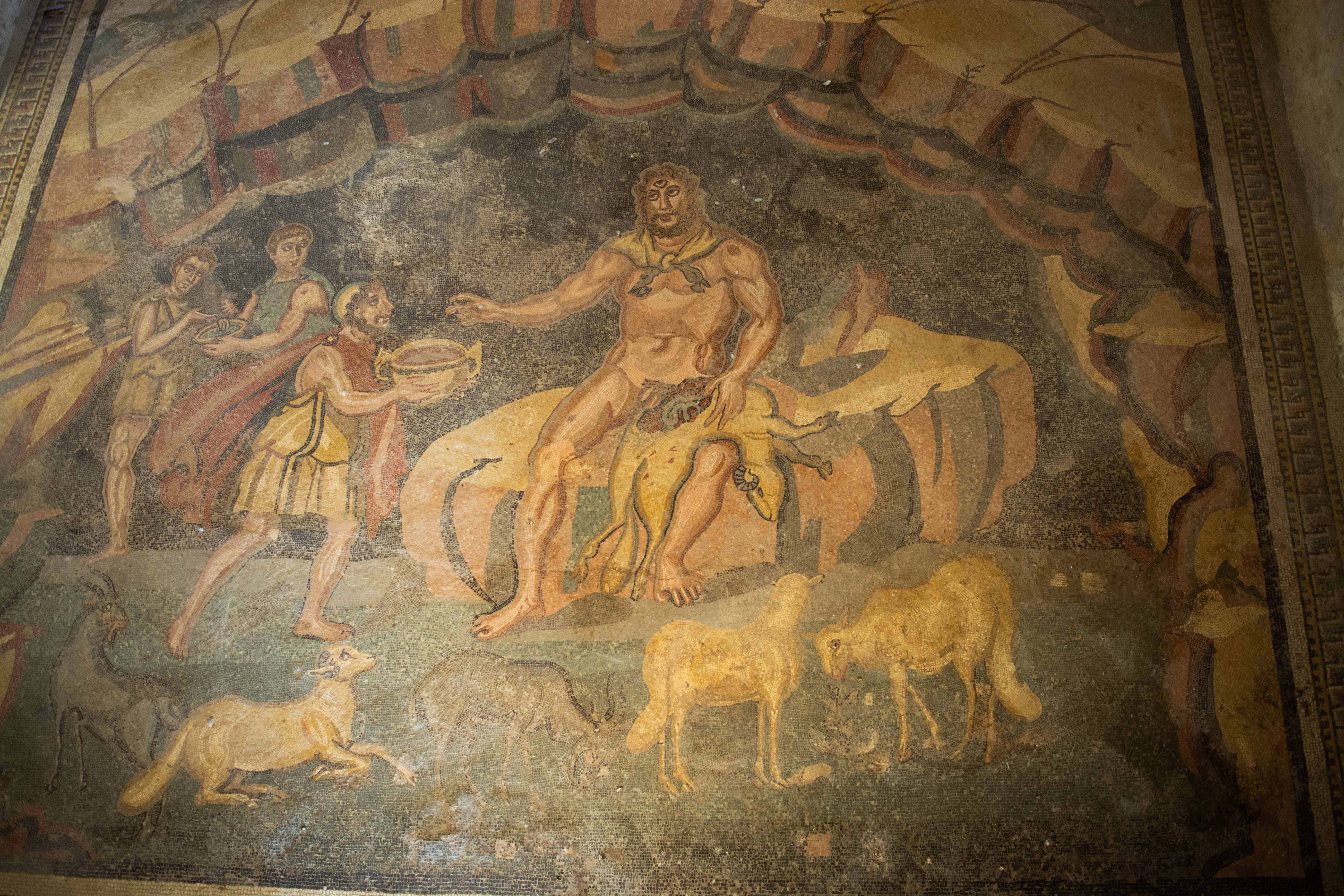
Once the cyclops has fallen into a drunken stupor, he asks Odysseus what his name is. Odysseus cleverly gives him a word which means “nobody.” Too intoxicated to protest or to question further, Polyphemus falls asleep. While he sleeps, Odysseus drives a sharpened stick into his eye, blinding him. When Polyphemus starts screaming in pain, his fellow giants ask who has harmed him, and Polyphemus replies, “Nobody!” In the morning Polyphemus lets the sheep out to graze but first feels their backs to make sure Odysseus and his men are not escaping. Blinded by Odysseus’ attack, he cannot see that Odysseus and his men are hiding underneath the sheep. Once they are safely away, Odysseus shouts back to the cyclops and tells him his real name.
Was this the homeowner’s favorite scene from one of his most cherished books? We cannot be sure.
The last room we visited had a colorful mosaic pattern surrounding an image known as the “Kissing couple” Could this be the homeowner and his wife?
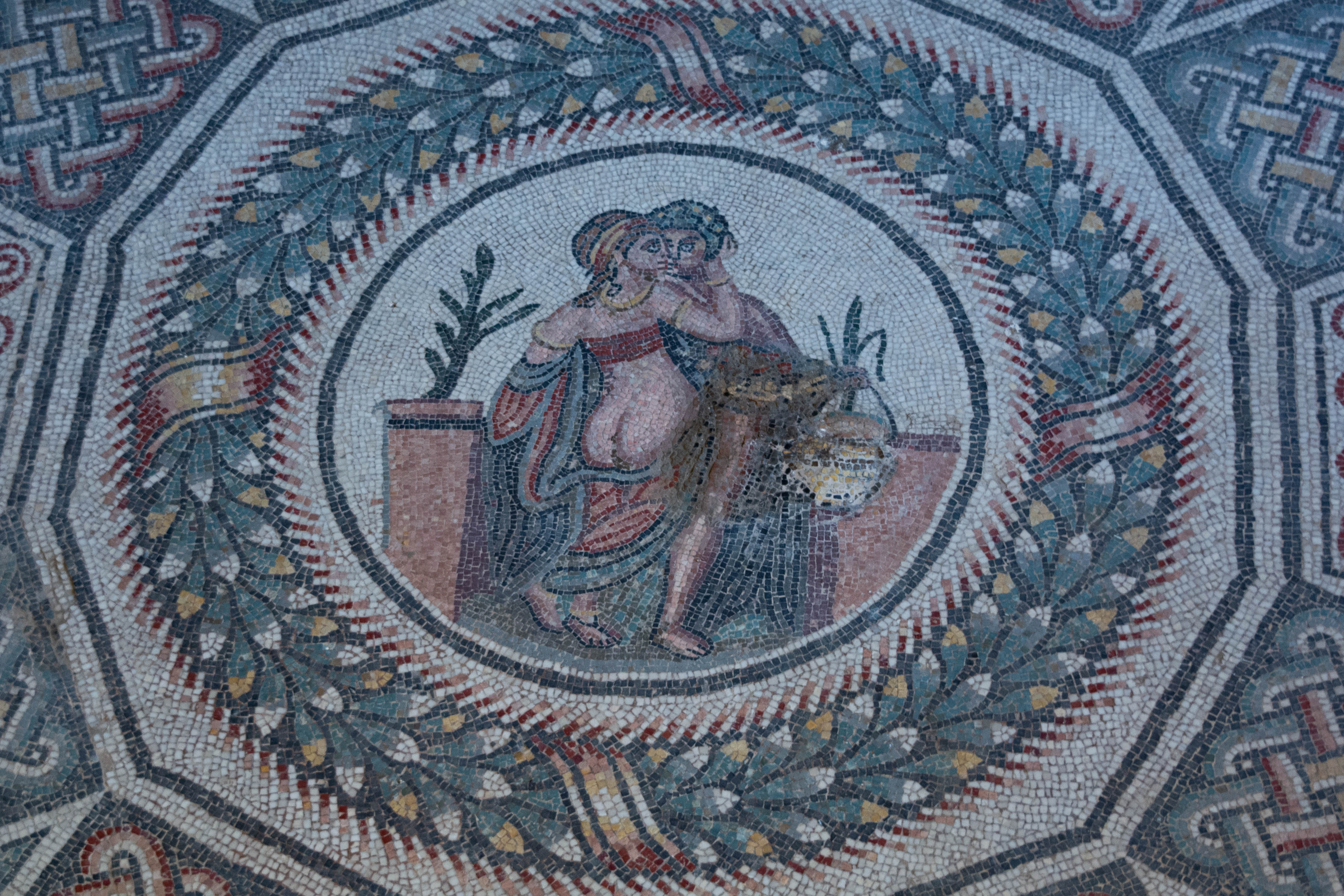
On our way back to the bus we stopped to have a packed lunch in the market near the villa. We were not able to go into town because the Pope was still there. One of the merchants here was selling locally grown figs, which we tried after finishing our sandwiches and gelato. These are soft-shelled fruits with gooey insides. To eat them, you peel them open and suck out the contents:
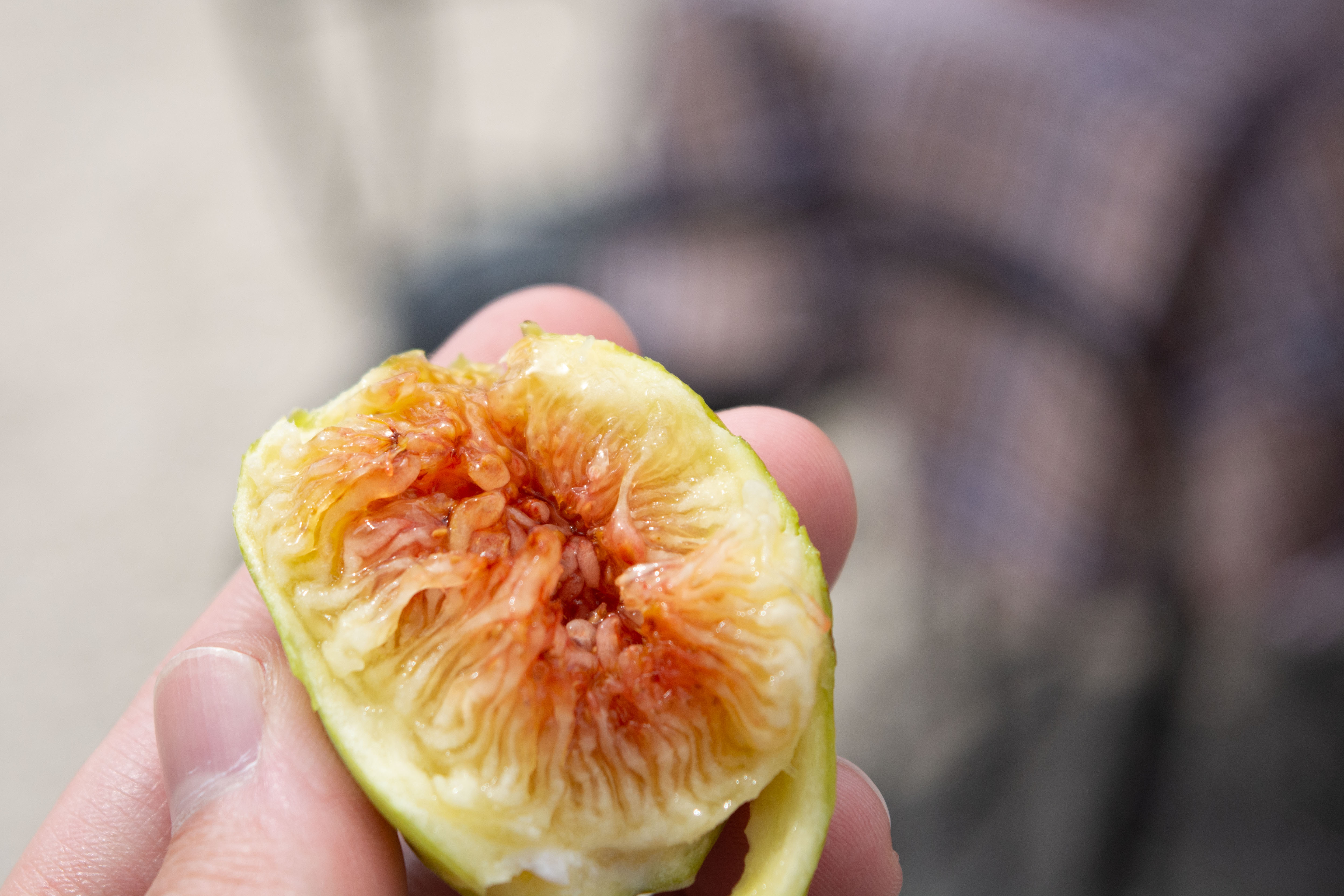
After finishing our lunch we got back onto the bus and finished our drive to the hotel in Syracuse.
Upon reaching the hotel we took a few minutes to unload and get settled in to our rooms before Denise led us on a short tour of some of the interesting sights nearby. Those pictures will be shown later, along with the rest of the pictures from Syracuse, in Day 5’s post. Check back soon!
